India is a place of mixed cultures, ethnicity and religions. In fact Buddhism, Jainism and Sikhism have their roots here. A tour to India is generally undertaken for its cultural inclinations; but the religious facet of the nation no less excites people all over the world. Some of the prime Pilgrimage Sites in India are as follows:
Situated in the northwestern part of India in the State of Punjab, 51 km east of Lahore, Pakistan, the city of Amritsar is globally famous for the Golden Temple and the unfortunate Jallianwala Bagh tragedy. One of the loveliest tourist destinations in India, Amritsar was discovered in 1574 by Guru Ram Das. The several Gurudwaras in this city are some of the greatest attractions for tourists.
On your tour to India you will enjoy your visit to the city of Amritsar as it offers a distinct character in areas of culture and ethnicity. The various tourist attractions in Amritsar are discussed as follows:
Golden Temple:
Constructed by Guru Ram Das during 14th century, the Golden Temple, also known as Sri Harmandir Sahib, is considered as one of the most hallowed sites of Sikh religion. Exuding both Hindu and Muslim styles of architecture, it flaunts a huge dome made of pure gold. Its architectural genius attracts the interest of one and all around the globe. Although primarily a sacred pilgrimage spot for the Sikhs, it is also visited by travelers from various parts of the world. This temple arranges for Bundara (Lunch/Dinner) through out the year for the visitors. The Jalianwala Bagh is a memorial of the martyrs of the 1919 massacre by the British General Dyer. The Durgiana Mandir is a beautiful temple dedicated to Goddess Durga. The Baba Atal Rai Tower, just a few kilometers from the main town, is believed to be the spot where Guru Har Gobind died. Wagah (28 km) is on the Indo-Pakistan border where tourists throng to see the change of guards ceremony by the border security forces of both the countries
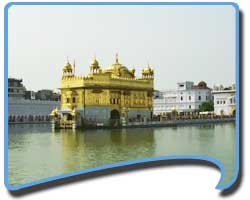
Jallianwala Bagh -
Located near the Golden Temple, it is a witness of the tragedy called Jallianwala Bagh Massacre. General Dyer opened fire at the venue where thousands of Punjabis gathered from nearby places to celebrate the festival of Baisakhi Day, on 13 April 1919.
Wagah Border -
About 28 kms from Amritsar, the Wagah Border is an army outpost on India and Pakistan border between the cities of Amritsar and Lahore.
Rambagh Garden –
A new age garden, which houses Maharaja Ranjit Singh’s palace. Presently it serves as a museum.
Ram Tirath Temple –
Situated on the Amritsar-Chogawan road, where Valmiki Maharaj is supposed to have composed Ramayana, it is another of the tourist attractions in Amritsar.
Tarn Taran –
At about 25 kms to the south of Amritsar is situated the Tarn Taran – a lake which bears holy as well as medical associations attached to it. Built by Ranjit Singh, it has fairs being celebrated on every ‘Amavas’ night. The water of the tank is said to have healing effect for skin diseases.
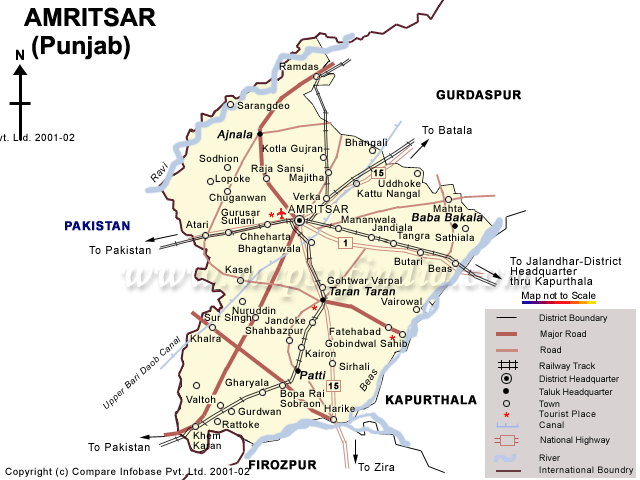
One of the favorite tourist destinations in India for pilgrims and travelers alike, Haridwar offers several options. Located to the north of the center, Hari-ki-Pairi (or Har-ki-Pairi) is considered to be the city’s focal point, where devotees assemble for a holy dip in the Ganges. Legend says that this is where a drop of nectar fell as a result of the manthan - churning of the oceans – Mythologically it signifies the start of the world.
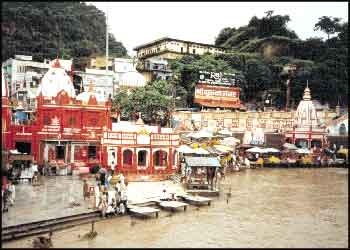
Mansa Devi Mandir, on top of a hill near the center of town is reached by cable car or by a road that gently rambles uphill, starting from the Railway Road. The views around the temple are the main attractions here.
Devoted to Mother India, Bharat Mata Mandir, at 5 km to the north of the center is partly temple and partly a nation building exercise, with seven storeys that are home to deities, saints, and secular heroes of all Indian faiths.
At 8-9km from railway station, the Chandidevi Mandir, is another of the wonderful tourist attractions in Haridwar atop the ‘Neel Parvat’ on the eastern bank of river Ganga. Built in 1929 A.D. by the king of Kashmir, Suchat Singh, it is dedicated to Goddess Chandi.
At 7-8 km from railway station in the south Kankhal town, the Daksh Mandir is dedicated to Lord Shiva and sees the influx of several tourists and pilgrims.
A city famous for the Kumbh Mela, Haridwar can be easily reached by air, train or bus. Dehradun’s Jolly Grant airport, that offers daily service twice a week to Delhi on Air Deccan, is located 20 km from Haridwar. Once you are in this sacred city of India, you will have no problems in lodging into any of the hotels in Haridwar that come in various categories and prices to suit your needs.
Situated in the north Indian state of Uttaranchal at a distance of 214 km from Delhi, the city of Haridwar in North Karnataka holds tremendous religious and historical significance. Research about Haridwar says that the erstwhile major trading center bears historical legacy in forms of giant temples, palaces, market streets, and forts and several other ancient monuments.
Hari-ki-Pairi
Mansa Devi Mandir
Bharat Mata Mandir
Chandidevi Mandir
Daksh Mandir
Log on to which gives online information www.ARKI-TRAVEL.BLOGSPOT.IN About Haridwar, the tourist attractions in Haridwar – one of the favorite tourist destinations in India, booking for India travel tours, and tour packages on your tour to India.
Believed to be the abode of Lord Shiva and Goddess Parvati, who stood upon this land at the beginning of time, Varanasi is “older than history, older than tradition, older even than legend” as Mark Twain had rightly put it. Since time immemorial, Varanasi has attracted hordes of pilgrims and devotees from all corners of the world, who come here to explore the religious places and other tourist attractions in Varanasi. To be in Varanasi is an experience of a lifetime, a self–discovery of its own kind, whereby you’ll experience an eternal oneness of the body and soul.
Mythology reins in Varanasi, and the city offers a breathtaking experience to every visitor. The early morning sun rays shimmering across the holy Ganges, the temples and shrines adorning the high banks drenched in a golden hue, the air filled with chants of soul-stirring hymns and mantras along with the fragrance of incense, and a refreshing dip in the holy waters – the multifarious sights and sounds of Varanasi will mesmerize you.
Besides having remained a major cultural and religious centre in northern India for ages, Varanasi is also famous for the Benares Gharana (school) of Indian classical music developed here. Varanasi is also home to the distinguished Banaras Hindu University. Numerous eminent Indian philosophers, poets, writers, and musicians resided in Varanasi at some point of time or other. The local people of Benares are known to be connoisseurs of literature, music, Vedic philosophy, arts, crafts and architecture.
Accessibility:
Varanasi can be easily accessed by the major modes of transport, that is, air, rail and road. Several domestic flights ply daily to Varanasi from various cities in India. Being located in the heartland of the North Indian plains, Varanasi is also decently connected by rail to major Indian cities like Delhi, Kolkata, Mumbai and others. An excellent network of roadways facilitates road transportation from Varanasi to all the major towns of Uttar Pradesh and surrounding areas.
Historical information about Varanasi:
The ultimate pilgrimage spot for Hindus since the days of yore, Varanasi is believed to have been the abode of Lord Shiva and Goddess Parvati, who stood upon this land at the beginning of time. Mark Twain had rightly said "Benares is older than history, older than tradition, older even than legend, and looks twice as old as all of them put together." The city has been a seat of learning and civilization for more than 3000 years. For centuries, the town has witnessed the flourish of knowledge, philosophy, culture, devotion to Gods, Indian arts and crafts. With the holy Buddhist pilgrimage spot of Sarnath being just 10 km away from Varanasi, the latter is also holy place for Buddhists. Believed to be the birthplace of Parsvanath, the 23rd Jain Tirthankar, Varanasi is also a pilgrimage place for Jains.
Accommodation, Climate and Clothing:
There is no dearth of hotels, resorts and guest houses for tourist accommodation in Varanasi. These resorts provide tourists with comfortable and luxurious retreat amid the mystic air of the city. Varanasi enjoys a pleasant winter, but a slightly harsh summer. Monsoon season brings torrential rains to the city. However, the months of October-November and February-March are generally comfortable and sunny. The ideal kind of clothing in Varanasi can be cotton clothes in summers and light woolens for winters.
India’s cultural capital, Varanasi – The City of Light, is the ultimate pilgrimage destination of all devout Hindus in search of salvation from the cycle of birth and rebirth. One of the world’s oldest living cities, Varanasi is "older than history, older than tradition, older even than legend” as Mark Twain had rightly remarked.
Situated on the banks of the holy River Ganges in the state of Uttar Pradesh in India, Varanasi is believed to have been the abode of Lord Shiva and Goddess Parvati, who stood upon this land at the beginning of time. Steeped in tradition and mythological legacy, Varanasi is also considered sacred because of the presence of the mighty Ganges River, which, many believe, possesses miraculous powers to wash away the sins of mortals.
Varanasi – The City of Light attracts scores of pilgrims and devotees from all corners of the world. A Tour to Varanasi can be the experience of a lifetime, a self–discovery of its own kind, whereby your body and soul will experience an eternal oneness.India’s cultural capital, Varanasi – The City of Light, is the ultimate pilgrimage destination of all devout Hindus in search of salvation from the cycle of birth and rebirth. One of the world’s oldest living cities, Varanasi is "older than history, older than tradition, older even than legend” as Mark Twain had rightly remarked.
Though the origin of Varanasi is not clearly known, the town is believed to have witnessed the flourish of knowledge, philosophy, culture, devotion to Gods, arts and crafts. Every year, hundreds and thousands of devout Hindus flock to this holy city, with a wish to expiate their sins. Since time immemorial, Varanasi has attracted hundreds and thousands of pilgrims and tourists from all corners of the world.
An important cultural and religious centre of northern India for ages, Varanasi is also renowned for the Benares Gharana (school) of Indian classical music which had its origin here. The City of Lord Shiva is also home to the distinguished Banaras Hindu University (BHU), one of the greatest centers of learning in India. Besides, Varanasi has been home to numerous eminent Indian philosophers, poets, writers, and musicians. The local people of Varanasi are true exponents of literature, music, Vedic philosophy, arts, crafts and architecture.
Among the main tourist places in Varanasi are the numerous Hindu temples, ashrams and ghats, several Buddhist Stupas and Jain temples. The Ganga Ghats are the main center of rituals and religious activities in Benares. The prominent Hindu temples worth visit while on Varanasi tour packages include the Durga temple, Sankat Mochan temple, Vishwanath temple, Tulsi Manas temple and Bharat Mata temple.
One of the most sacred cities in India, Varanasi in Uttar Pradesh is an important pilgrimage destination not only for Hindus, but also for Buddhists and Jains. Also popularly known as Banaras and Kashi, Varanasi is steeped in tradition and mythological legacy. Every year, pilgrims and regular tourists from all over the world travel to Varanasi to explore this mystic land in its varied colors. Varanasi maps provide invaluable information as well as travel guidance to tourists. Varanasi maps serve as the perfect tools for reaching the various tourist attractions in Varanasi without much difficulty.

Vaishno Devi occupies a crucial place among all the pilgrimage places of India and is most popular for the holy shrine of Vaishno Devi which is located here. It is a highly revered shrine located at a height of more that five thousand feet in the Trikuta Hills of the Shivalik Range. Vaishno Devi is also known as Mata Rani and Vaishnavi and is the second most visited one after the Tirupati Balaji temple of Andhra Pradesh. A large number of devout pilgrims drop in to this holy temple to seek the blessings of the goddess and include newly weds, vacationers and family holidaymakers.
The temple dedicated to the goddess is the main tourist attraction in Vaishno Devi and is at a distance of thirteen kilometers from Katra. The pilgrims pay a visit to this shrine which is in a hundred feet long cave with a narrow opening. A subtle presence of spirituality infuses even the most reluctant tourist with zest as he embarks on the difficult journey to catch a glimpse of the deity. The tourism in Vaishno Devi is gaining immense popularity due to the presence of this holy shrine and its picturesque and serene locale. There are certain mythological associations relating to the goddess according to which she was born as a young girl of unusual beauty and vigor, out of the jointly pooled 'Tejas' of many 'Devtas' (gods) and three lords Brahma, Vishnu and Shankar. The pressing need of the conception of the goddess was the destruction of Asura (Devil) Mahishasura. Conversely, another purpose was that she could introduce on earth an era of sanctimonious and ascetic life so that harmony could exist upon the world so that she could attain higher levels of spirituality through penance and in the end merge with Vishnu.
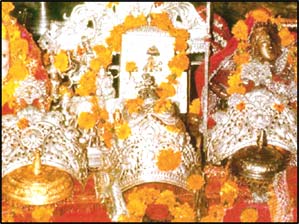
Apart from the main shrine of Vaishno Devi, there are several other shrines also that are worth paying a visit and include Bhumika Temple, Ban Ganga Temple, Charan Paduka Temple, Ardh Kuwari and The Bhairon (Bhairav) Temple.
Make your trip to Vaishno Devi a memorable event by staying at the right kind of accommodation. There are several good quality lodging options that are available here for the tourists. Hotels are also available in the nearby towns such as Jammu and Katra. A few well known hotels include - Hotel Asia Shripati in Katra, and Hotel Jammu Tawi and Hotel Jammu Ashok in Jammu.
Vaishno Devi is well-linked by air, rail and road and can be reached by any of the three modes. The nearest airport is in Jammu and flights are available for Delhi, Srinagar and Leh from here. Jammu is well-connected by a large number of trains with the important destinations of India such as Delhi, Kolkata and Mumbai. Road network is well maintained and you can reach here from the major north Indian towns easily.
Vaishno Devi is one of the holiest pilgrimage places of north India and is visited by innumerable tourists all the year round. Nestled in the Trikuta Hills at an altitude of 5300 feet, it is a fascinating place truly worthy of a visit. The holy shrine of Mata Vaishno Devi is located in a cave having an approach route of thirteen kilometers. People from all walks of life come here to seek the blessings of the divine goddess and have their wishes fulfilled. The pilgrims reciting the holy refrains fill the atmosphere with religious fervor and encourage the pilgrims to proceed on the tough climb upwards.
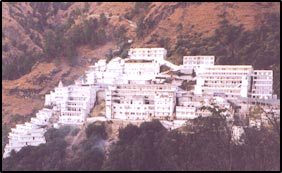
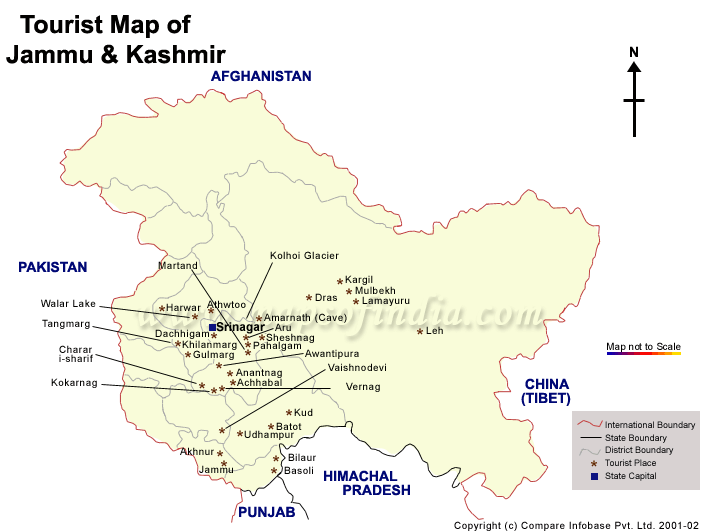
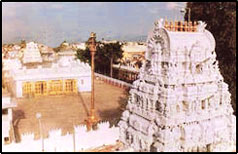 Tirupati-Balaji is located in the Chittoor district of Andhra Pradesh and is a highly consecrated town known for the temple of Lord Venkateshwara. Located magnificently on a hill at Tirumala, which is a chain of seven hills and is known as Venkatachalam, with more than eight hundred in altitude, it is frequented by hordes of tourists all the year round. Almost everyday is a festivity here and a prior knowledge about Tirupati-Balaji will help you make your tour to this sacred town a rewarding experience.
Tirupati-Balaji is located in the Chittoor district of Andhra Pradesh and is a highly consecrated town known for the temple of Lord Venkateshwara. Located magnificently on a hill at Tirumala, which is a chain of seven hills and is known as Venkatachalam, with more than eight hundred in altitude, it is frequented by hordes of tourists all the year round. Almost everyday is a festivity here and a prior knowledge about Tirupati-Balaji will help you make your tour to this sacred town a rewarding experience.
Several other places of tourist interest you will encounter on your tour to Tirupati-Balaji include Sri Govindrajaswamy Temple, Sri Kapileswaraswami Temple, Sri Kodandaramaswami Temple, Sri Kalyana Venkateswaraswami Temple and Tiruchanur.
Best Season, Climate and Clothing:
The summers are generally hot in Tirupati-Balaji and the mercury can reach as high as 40 degrees Celsius and the winters are pleasant with a cool climate. This place should ideally be visited between September to February, and for the summer, light cottons would be the best, whereas for the winters, light woolens are recommended.
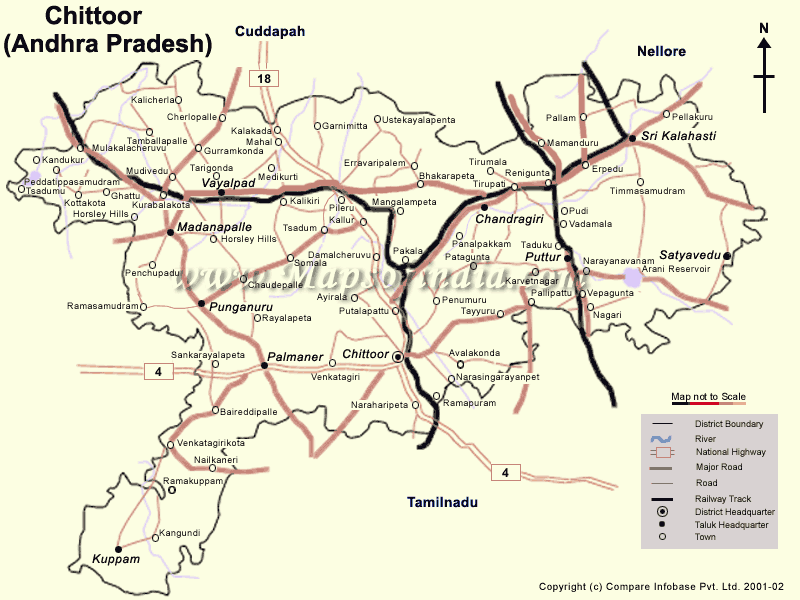
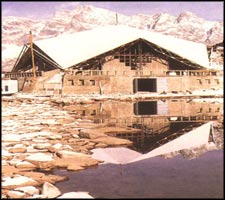 Situated in the Himalayas at an elevation of over 15,000 ft in the state of Uttarakhand, Hemkund Sahib is a much traveled pilgrimage site for the Sikhs. It is located in the highest altitude of the Hemkund Lake (4329 m above sea level) and is surrounded by snow clad peaks and their glaciers.
Situated in the Himalayas at an elevation of over 15,000 ft in the state of Uttarakhand, Hemkund Sahib is a much traveled pilgrimage site for the Sikhs. It is located in the highest altitude of the Hemkund Lake (4329 m above sea level) and is surrounded by snow clad peaks and their glaciers.
Visited both by Hindus and Sikhs and other communities as well, the very sacred Sikh shrine of Hemkund Sahib is the place where Guru Gobind Singh, the tenth and last Guru of the Sikhs, attained salvation after a prolonged process of meditation in his previous birth. The Guru’s memoirs which contain a comprehensive description of the site helped two devout Sikhs, Sant Sohan Singh and Havaldar Mohan Singh to revive it. According to Hindu mythology, Hemkund or Lokpal as it is also referred to as, is actually where Lakshman had performed meditation.
made up mostly of rock and ice, there is no habitation-animal or human. The place is as if made to order for a man in search of absolute peace to meditate upon the absolute truth.
There would not be another living thing in sight. The only sound one can hear would probably be one's own sound. Visiting this place could be regarded as the encounter with the personification of absolute peace and raw natural beauty. It does not take much imagination to understand how the place came to be regarded as a spiritual power place.
Hemkund is mainly a pilgrimage site, and people come here to pay reverence at the Gurdwara and the Lakshman Temple. Besides, one can enjoy the serene and exotic beauty of the place. The Valley of Flowers is also located near Hemkund. Those interested in adventure sports can visit Auli during winters and enjoy skiing in the Himalayas.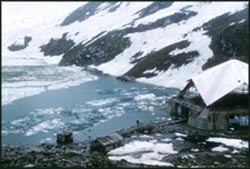
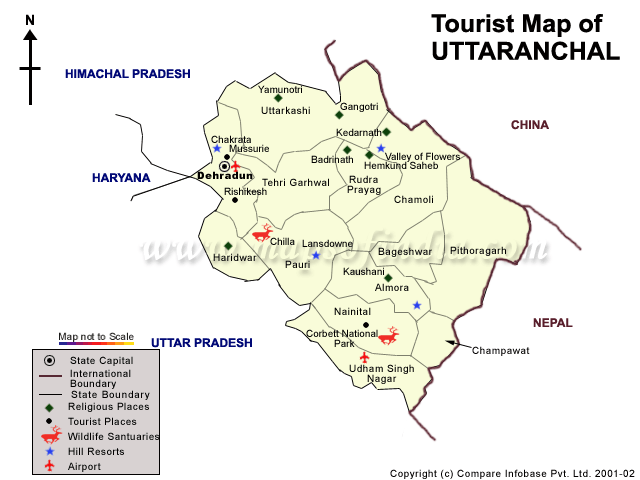
The major tourist attractions of Bodhgaya are the various Buddhist monasteries and Mahabodhi Tree. The Mahabodhi complex is the place where Buddha meditated and attained Nirvana under the famous Bodhi Tree.
The solitude and peace seekers are surely going to find Bodhgaya a magnificent tourist destination that is away from the din and rush of the town and you will get the desired level of peace and joy during your Bodhgaya tour. Bodhgaya is also declared as a World Heritage Site by UNESCO and the number of tourists visiting this religious place is increasing day by day. Hence, there are also several accommodations in Bodhgaya that are known for their utmost hospitality and warmth in services. Bodhgaya can be reached by air, rail and road transport quite easily as there is an international airport in Bodhgaya that provides services to the various domestic and international flights. The road network in Bodhgaya is also equally good and the major cities in and around Bodhgaya are connected by the road transport system. The facility of railways is also available as the huge numbers of pilgrims and tourists drop in to this town for the tour.
The ideal time to visit Bodhgaya is during the winters because during this period of time, the climate is quite pleasant and you can enjoy your tour to the fullest extent. The local people of Bodhgaya are hospitable and also quite helpful. This pilgrimage center occupies an important place in the itinerary of a tourist who is on his tour of east India.
Bodhgaya is a small town in the state of Bihar and is one of the most venerated of the Buddhist sites in India. It is the place where Buddha attained spiritualenlightenment while he was meditating under the Bodhi tree. That particular tree later on came to be known as the Mahabodhi tree . Bodhgaya is also popular as a Buddhist learning center. Several important facts about Bodhgaya would further enrich the knowledge of the tourists before they embark on a tour to this splendid ancient city.
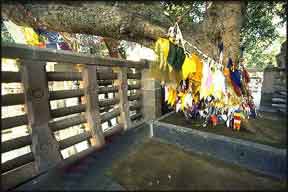 The history of Bodhgaya can be traced back to the 7th century and it was the part of the first small kingdoms of India. This place came to prominence when a prince called Siddhartha gave up all the material pleasures and after strenuous efforts through meditation, attained enlightenment or Nirvana under a Bodhi tree. There is also a small shrine that was built under the rule of the great Mauryan ruler Ashoka in the 3rd century B.C. It is one of the most important places in Bodhgaya and should not be missed out during your trip to Bodhgaya.
The history of Bodhgaya can be traced back to the 7th century and it was the part of the first small kingdoms of India. This place came to prominence when a prince called Siddhartha gave up all the material pleasures and after strenuous efforts through meditation, attained enlightenment or Nirvana under a Bodhi tree. There is also a small shrine that was built under the rule of the great Mauryan ruler Ashoka in the 3rd century B.C. It is one of the most important places in Bodhgaya and should not be missed out during your trip to Bodhgaya.
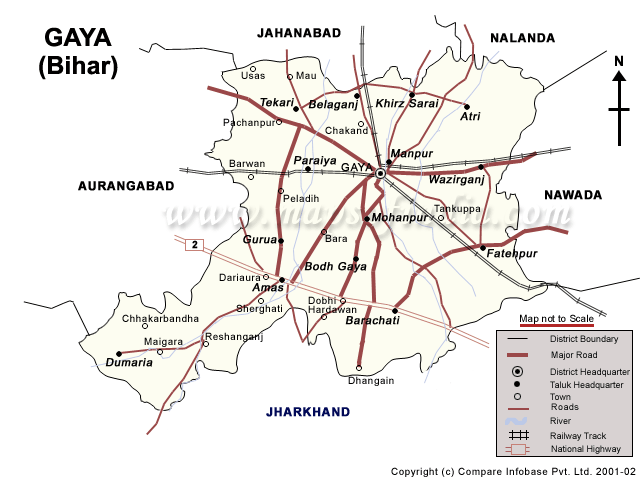
AMRITSAR TOURIST PLACE
One of the most ancient cities in India Amritsar has several religious sites and fascinating tourist spots. The simplicity of the city attracts tourists. The name Amritsar is dedicated to the pure water that surrounds the Temple and it means “Holy Pool of Nectarâ€. The major tourist attractions of Amritsar are discussed below:Situated in the northwestern part of India in the State of Punjab, 51 km east of Lahore, Pakistan, the city of Amritsar is globally famous for the Golden Temple and the unfortunate Jallianwala Bagh tragedy. One of the loveliest tourist destinations in India, Amritsar was discovered in 1574 by Guru Ram Das. The several Gurudwaras in this city are some of the greatest attractions for tourists.
On your tour to India you will enjoy your visit to the city of Amritsar as it offers a distinct character in areas of culture and ethnicity. The various tourist attractions in Amritsar are discussed as follows:
Golden Temple:
Constructed by Guru Ram Das during 14th century, the Golden Temple, also known as Sri Harmandir Sahib, is considered as one of the most hallowed sites of Sikh religion. Exuding both Hindu and Muslim styles of architecture, it flaunts a huge dome made of pure gold. Its architectural genius attracts the interest of one and all around the globe. Although primarily a sacred pilgrimage spot for the Sikhs, it is also visited by travelers from various parts of the world. This temple arranges for Bundara (Lunch/Dinner) through out the year for the visitors. The Jalianwala Bagh is a memorial of the martyrs of the 1919 massacre by the British General Dyer. The Durgiana Mandir is a beautiful temple dedicated to Goddess Durga. The Baba Atal Rai Tower, just a few kilometers from the main town, is believed to be the spot where Guru Har Gobind died. Wagah (28 km) is on the Indo-Pakistan border where tourists throng to see the change of guards ceremony by the border security forces of both the countries

Jallianwala Bagh -
Located near the Golden Temple, it is a witness of the tragedy called Jallianwala Bagh Massacre. General Dyer opened fire at the venue where thousands of Punjabis gathered from nearby places to celebrate the festival of Baisakhi Day, on 13 April 1919.
Wagah Border -
About 28 kms from Amritsar, the Wagah Border is an army outpost on India and Pakistan border between the cities of Amritsar and Lahore.
Rambagh Garden –
A new age garden, which houses Maharaja Ranjit Singh’s palace. Presently it serves as a museum.
Ram Tirath Temple –
Situated on the Amritsar-Chogawan road, where Valmiki Maharaj is supposed to have composed Ramayana, it is another of the tourist attractions in Amritsar.
Tarn Taran –
At about 25 kms to the south of Amritsar is situated the Tarn Taran – a lake which bears holy as well as medical associations attached to it. Built by Ranjit Singh, it has fairs being celebrated on every ‘Amavas’ night. The water of the tank is said to have healing effect for skin diseases.

HARIDWAR TOURIST PLACE
One of the holiest cities along the banks of the Ganges, Haridwar associates a lot of significance to Indian mythology. Legend has it that in the Vanaparva section of the Mahabharata, sage Dhaumya mentions Haridwar and Kankhal while speaking to Yudhisthira about the tirthas of India, Gangadwar. One of the Char Dhams (the four main centers of pilgrimage in Uttarakhand namely, Badrinath, Kedarnath, Gangotri, and Yamunotri), the city of Haridwar came under the reign of the Maurya Empire (322–185 BC), and later under the Kushan Empire (1st–3rd centuries).One of the favorite tourist destinations in India for pilgrims and travelers alike, Haridwar offers several options. Located to the north of the center, Hari-ki-Pairi (or Har-ki-Pairi) is considered to be the city’s focal point, where devotees assemble for a holy dip in the Ganges. Legend says that this is where a drop of nectar fell as a result of the manthan - churning of the oceans – Mythologically it signifies the start of the world.

Mansa Devi Mandir, on top of a hill near the center of town is reached by cable car or by a road that gently rambles uphill, starting from the Railway Road. The views around the temple are the main attractions here.
Devoted to Mother India, Bharat Mata Mandir, at 5 km to the north of the center is partly temple and partly a nation building exercise, with seven storeys that are home to deities, saints, and secular heroes of all Indian faiths.
At 8-9km from railway station, the Chandidevi Mandir, is another of the wonderful tourist attractions in Haridwar atop the ‘Neel Parvat’ on the eastern bank of river Ganga. Built in 1929 A.D. by the king of Kashmir, Suchat Singh, it is dedicated to Goddess Chandi.
At 7-8 km from railway station in the south Kankhal town, the Daksh Mandir is dedicated to Lord Shiva and sees the influx of several tourists and pilgrims.
A city famous for the Kumbh Mela, Haridwar can be easily reached by air, train or bus. Dehradun’s Jolly Grant airport, that offers daily service twice a week to Delhi on Air Deccan, is located 20 km from Haridwar. Once you are in this sacred city of India, you will have no problems in lodging into any of the hotels in Haridwar that come in various categories and prices to suit your needs.
Situated in the north Indian state of Uttaranchal at a distance of 214 km from Delhi, the city of Haridwar in North Karnataka holds tremendous religious and historical significance. Research about Haridwar says that the erstwhile major trading center bears historical legacy in forms of giant temples, palaces, market streets, and forts and several other ancient monuments.
Fast Facts:
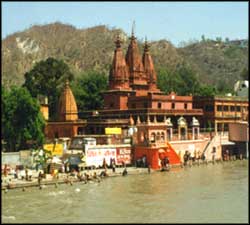

| Population | 2,30,000 |
| Languages | Hindi and English |
| Best time to visit | October to March |
| STD code | 0133 |
History:
The history about Haridwar will tell you that it attaches deep seated importance to the mythological and spiritual background of India. Legend says that in the Vanaparva section of the Mahabharata, sage Dhaumya cites Haridwar and Kankhal in his discussion with Yudhisthira about the various tirthas of India, Gangadwar. One of the Char Dhams (the four prime centers of pilgrimage in Uttarakhand namely, Kedarnath, Badrinath, Gangotri, and Yamunotri, the city of Haridwar came under the control of the Maurya Empire between 322 and 185 BC, and later under the Kushan Empire during the 1st–3rd centuries.
The history about Haridwar will tell you that it attaches deep seated importance to the mythological and spiritual background of India. Legend says that in the Vanaparva section of the Mahabharata, sage Dhaumya cites Haridwar and Kankhal in his discussion with Yudhisthira about the various tirthas of India, Gangadwar. One of the Char Dhams (the four prime centers of pilgrimage in Uttarakhand namely, Kedarnath, Badrinath, Gangotri, and Yamunotri, the city of Haridwar came under the control of the Maurya Empire between 322 and 185 BC, and later under the Kushan Empire during the 1st–3rd centuries.
Haridwar, one of the favorite tourist destinations in India for pilgrims and vacationers alike, offers numerous options. Situated to the north of the center, Hari-ki-Pairi (or Har-ki-Pairi) is acclaimed as the city’s nucleus, where the religious followers assemble to bathe in the holy Ganges. According to the legend a drop of nectar fell in this place as a result of the samudra manthan - churning of the oceans – Mythologically it denotes the beginning of the world.
Best Season, Climate and Clothing:
Situated at an altitude of about 300 meters above sea level, Haridwar has the temperature usually hovering around 40°C during summers and 6°C in the winters. The best time to visit Haridwar is between the months of October and March during winter. Light cottons for summer and heavy woolens for winters will make for perfect clothing in Haridwar.
How to Reach Haridwar:
By Air: The nearest airport from Haridwar is the Jolly Grant in Dehradun, but it is rather advisable to avail of the road or rail services to Delhi and then take flights to your preferred destination.
By Rail: Haridwar is well linked by trains to mostly all the important cities in India. In fact, trains are the major means of transport that bring tourists to this city.
Situated at an altitude of about 300 meters above sea level, Haridwar has the temperature usually hovering around 40°C during summers and 6°C in the winters. The best time to visit Haridwar is between the months of October and March during winter. Light cottons for summer and heavy woolens for winters will make for perfect clothing in Haridwar.
How to Reach Haridwar:
By Air: The nearest airport from Haridwar is the Jolly Grant in Dehradun, but it is rather advisable to avail of the road or rail services to Delhi and then take flights to your preferred destination.
By Rail: Haridwar is well linked by trains to mostly all the important cities in India. In fact, trains are the major means of transport that bring tourists to this city.
By Road: The National Highway no.45 stretches across the city of Haridwar and is connected to other cities of the state and the country. The excellent road network connects Haridwar to Delhi for a comfortable journey.
Tourist Attractions in Haridwar:
The various tourist interests in Haridwar are as follows:
Tourist Attractions in Haridwar:
The various tourist interests in Haridwar are as follows:
Log on to which gives online information www.ARKI-TRAVEL.BLOGSPOT.IN About Haridwar, the tourist attractions in Haridwar – one of the favorite tourist destinations in India, booking for India travel tours, and tour packages on your tour to India.
Situated along the Ganges, the city of Haridwar in Uttarakhand exudes tremendous mythological and historical value. Occupying over 12.302 sq. km, Haridwar, is the doorway to the three other major pilgrimages of India - Rishikesh, Badrinath, and Kedarnath. A major center of attention as it has been from the times of Buddha and down through the British rule and further still in the contemporary times, Haridwar offers some of the greatest tourist attractions like huge temples, busy market streets, ancient palaces, and forts.
Tourist Attractions in Haridwar:
One of the much traveled tourist destinations in India for pilgrims and vacationers alike, Haridwar offers several tourist sites to be explored. Located to the north, Hari-ki-Pairi (or Har-ki-Pairi) is taken as the city’s central point, where devotees come for a holy dip in the River Ganges.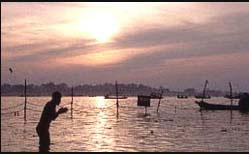 According to the legend this is actually where a drop of nectar fell as a result of the samudra manthan (churning of the oceans) – Mythically it signifies the start of the world.
According to the legend this is actually where a drop of nectar fell as a result of the samudra manthan (churning of the oceans) – Mythically it signifies the start of the world.
Haridwar is a city of temples, monuments and forts – most of them displaying rich Hindu architectural culture. Some of them have been discussed as follows:
Mansa Devi Mandir, situated on top of a hill towards the center of Haridwar is reached either by cable car or by a road that runs up to the hill, starting from the Railway Road. The scenic landscape around the temple is the main attraction here.
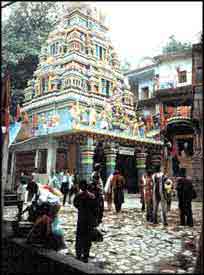
Tourist Attractions in Haridwar:
One of the much traveled tourist destinations in India for pilgrims and vacationers alike, Haridwar offers several tourist sites to be explored. Located to the north, Hari-ki-Pairi (or Har-ki-Pairi) is taken as the city’s central point, where devotees come for a holy dip in the River Ganges.
 According to the legend this is actually where a drop of nectar fell as a result of the samudra manthan (churning of the oceans) – Mythically it signifies the start of the world.
According to the legend this is actually where a drop of nectar fell as a result of the samudra manthan (churning of the oceans) – Mythically it signifies the start of the world.Haridwar is a city of temples, monuments and forts – most of them displaying rich Hindu architectural culture. Some of them have been discussed as follows:
Mansa Devi Mandir, situated on top of a hill towards the center of Haridwar is reached either by cable car or by a road that runs up to the hill, starting from the Railway Road. The scenic landscape around the temple is the main attraction here.

Located 5 km to the north of central Haridwar, the Bharat Mata Mandir is devoted to Mother India. Partly temple and partly nation building exercise, it has seven storeys that house deities of saints, and secular heroes of all Indian religions.
Situated atop the ‘Neel Parvat’ on the eastern bank of river Ganga at 8-9km from the Haridwar railway station, the Chandidevi Mandir stands as yet another of the wonderful tourist attractions in Haridwar. Created in 1929 A.D. by the king of Kashmir, Suchat Singh, it worships Goddess Chandi.
Dedicated to Lord Shiva, the Daksh Mandir is situated at 7-8 km from railway station in the southern Kankhal town, and it is witness to the advent of several tourists and pilgrims.
Other Attractions:
Gurukul Kangri University:
Situated on the Haridwar-Jwalapur bypass road, this university uniquely follows the ancient tradition of Guru-Sishya technique of education. The institution also houses the Ved Mandir Museum which preserves an excellent collection of archaeological displays and exhibits artifacts of historical value.
Situated atop the ‘Neel Parvat’ on the eastern bank of river Ganga at 8-9km from the Haridwar railway station, the Chandidevi Mandir stands as yet another of the wonderful tourist attractions in Haridwar. Created in 1929 A.D. by the king of Kashmir, Suchat Singh, it worships Goddess Chandi.
Dedicated to Lord Shiva, the Daksh Mandir is situated at 7-8 km from railway station in the southern Kankhal town, and it is witness to the advent of several tourists and pilgrims.
Other Attractions:
Gurukul Kangri University:
Situated on the Haridwar-Jwalapur bypass road, this university uniquely follows the ancient tradition of Guru-Sishya technique of education. The institution also houses the Ved Mandir Museum which preserves an excellent collection of archaeological displays and exhibits artifacts of historical value.
Neel Dhara Pakshi Vihar:
You can spot a huge assortment of bird species in Neel Dhara Pakshi Vihar. This place will charm you completely especially during the winters when it is visited by the migratory birds as well. Near Laljiwala along the banks of river Ganges you can spot the elegant Siberian Cranes. Beauty Point: Approximately 2 km from Haridwar on the Mansa Devi temple road, is located a scenic point which offers an excellent panoramic view of the city of Haridwar and its greenery. Rishikesh, around 28 km off Haridwar, is at the base of the Himalayas and it is where the Ganges comes down to the plains from the hills. Some of the options of excursion from Haridwar are as follows: Sapt Rishi Ashram (along the Haridwar-Rishikesh road) Kanva Rishi Ashram (42 km from Haridwar) Chila Wildlife Sanctuary 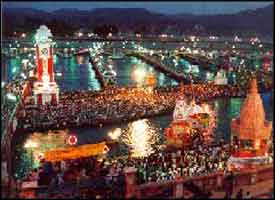 Events and Festivals: Events and Festivals:The Kumbh Mela is one of the most hugely attended festivals in Haridwar. The history of the Kumbh Mela goes back to the creation of the Universe and people from various religions and communities from all over the world gather here to take a holy dip in the Ganges. Log on to www.ARKI-TRAVEL.BLOGSPOT.IN which gives online information on Tourist Attractions on your tour to Haridwar, booking for India travel tours, and tour packages on your tour to India. 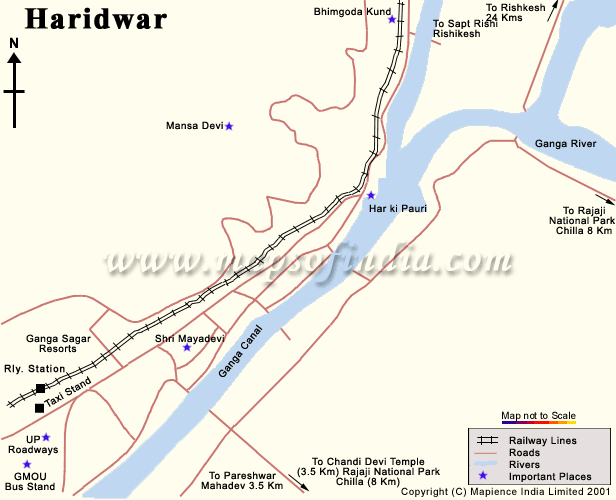
|
VARANASI TOURIST PLACE
Varanasi, also popularly known as Benares and Kashi, is one of the world’s oldest living cities situated on the banks of the holy River Ganges in the Indian state of Uttar Pradesh. Steeped in tradition and mythological legacy, this City of Lord Shiva is one of the most important pilgrimage destinations for not only Hindus, but Buddhists and Jains as well.Believed to be the abode of Lord Shiva and Goddess Parvati, who stood upon this land at the beginning of time, Varanasi is “older than history, older than tradition, older even than legend” as Mark Twain had rightly put it. Since time immemorial, Varanasi has attracted hordes of pilgrims and devotees from all corners of the world, who come here to explore the religious places and other tourist attractions in Varanasi. To be in Varanasi is an experience of a lifetime, a self–discovery of its own kind, whereby you’ll experience an eternal oneness of the body and soul.
Mythology reins in Varanasi, and the city offers a breathtaking experience to every visitor. The early morning sun rays shimmering across the holy Ganges, the temples and shrines adorning the high banks drenched in a golden hue, the air filled with chants of soul-stirring hymns and mantras along with the fragrance of incense, and a refreshing dip in the holy waters – the multifarious sights and sounds of Varanasi will mesmerize you.
Besides having remained a major cultural and religious centre in northern India for ages, Varanasi is also famous for the Benares Gharana (school) of Indian classical music developed here. Varanasi is also home to the distinguished Banaras Hindu University. Numerous eminent Indian philosophers, poets, writers, and musicians resided in Varanasi at some point of time or other. The local people of Benares are known to be connoisseurs of literature, music, Vedic philosophy, arts, crafts and architecture.
Accessibility:
Varanasi can be easily accessed by the major modes of transport, that is, air, rail and road. Several domestic flights ply daily to Varanasi from various cities in India. Being located in the heartland of the North Indian plains, Varanasi is also decently connected by rail to major Indian cities like Delhi, Kolkata, Mumbai and others. An excellent network of roadways facilitates road transportation from Varanasi to all the major towns of Uttar Pradesh and surrounding areas.
The cultural capital of India, Varanasi in Uttar Pradesh is a major center for spiritualism, mysticism, Hinduism and Indian philosophy. Also known as Benares and Kashi, Varanasi is one of the oldest surviving cities worldwide and an important pilgrimage destination not only for Hindus, but for Buddhists and Jains as well. Learn more about Varanasi in touristplacesinindia.com before you plan to travel to Varanasi.
Home to numerous Hindu temples, ashrams and ghats, which are among the main attractions for visitors, Varanasi also boasts of several Buddhist Stupas and Jain temples. A melting pot of Indian civilization, Varanasi receives hordes of pilgrims and devotees every year from all corners of the world, who are attracted by the religious places and other tourist attractions of the town.
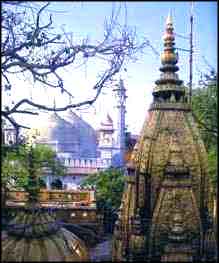 Since time immemorial, Varanasi has continued to be an important cultural and religious centre in northern India. Besides, the city is also famous for the Benares Gharana (school) of Indian classical music developed here. Another prominent feature about Varanasi is that the town houses the distinguished Banaras Hindu University. At various points of time in history, Varanasi served home to many an eminent Indian philosopher, poet, writer, and musician. The local people of Varanasi are famous as advocates of literature, music, Vedic philosophy, arts, crafts and architecture.
Since time immemorial, Varanasi has continued to be an important cultural and religious centre in northern India. Besides, the city is also famous for the Benares Gharana (school) of Indian classical music developed here. Another prominent feature about Varanasi is that the town houses the distinguished Banaras Hindu University. At various points of time in history, Varanasi served home to many an eminent Indian philosopher, poet, writer, and musician. The local people of Varanasi are famous as advocates of literature, music, Vedic philosophy, arts, crafts and architecture.
Home to numerous Hindu temples, ashrams and ghats, which are among the main attractions for visitors, Varanasi also boasts of several Buddhist Stupas and Jain temples. A melting pot of Indian civilization, Varanasi receives hordes of pilgrims and devotees every year from all corners of the world, who are attracted by the religious places and other tourist attractions of the town.
 Since time immemorial, Varanasi has continued to be an important cultural and religious centre in northern India. Besides, the city is also famous for the Benares Gharana (school) of Indian classical music developed here. Another prominent feature about Varanasi is that the town houses the distinguished Banaras Hindu University. At various points of time in history, Varanasi served home to many an eminent Indian philosopher, poet, writer, and musician. The local people of Varanasi are famous as advocates of literature, music, Vedic philosophy, arts, crafts and architecture.
Since time immemorial, Varanasi has continued to be an important cultural and religious centre in northern India. Besides, the city is also famous for the Benares Gharana (school) of Indian classical music developed here. Another prominent feature about Varanasi is that the town houses the distinguished Banaras Hindu University. At various points of time in history, Varanasi served home to many an eminent Indian philosopher, poet, writer, and musician. The local people of Varanasi are famous as advocates of literature, music, Vedic philosophy, arts, crafts and architecture.
Fast Facts
| Area | 83.05 sq km |
| Altitude | 80.71 meters above sea level |
| Languages | Hindi, English |
| STD Code | 0542 |
| Best time to visit | October-March |
Historical information about Varanasi:
The ultimate pilgrimage spot for Hindus since the days of yore, Varanasi is believed to have been the abode of Lord Shiva and Goddess Parvati, who stood upon this land at the beginning of time. Mark Twain had rightly said "Benares is older than history, older than tradition, older even than legend, and looks twice as old as all of them put together." The city has been a seat of learning and civilization for more than 3000 years. For centuries, the town has witnessed the flourish of knowledge, philosophy, culture, devotion to Gods, Indian arts and crafts. With the holy Buddhist pilgrimage spot of Sarnath being just 10 km away from Varanasi, the latter is also holy place for Buddhists. Believed to be the birthplace of Parsvanath, the 23rd Jain Tirthankar, Varanasi is also a pilgrimage place for Jains.
Accommodation, Climate and Clothing:
There is no dearth of hotels, resorts and guest houses for tourist accommodation in Varanasi. These resorts provide tourists with comfortable and luxurious retreat amid the mystic air of the city. Varanasi enjoys a pleasant winter, but a slightly harsh summer. Monsoon season brings torrential rains to the city. However, the months of October-November and February-March are generally comfortable and sunny. The ideal kind of clothing in Varanasi can be cotton clothes in summers and light woolens for winters.
India’s cultural capital, Varanasi – The City of Light, is the ultimate pilgrimage destination of all devout Hindus in search of salvation from the cycle of birth and rebirth. One of the world’s oldest living cities, Varanasi is "older than history, older than tradition, older even than legend” as Mark Twain had rightly remarked.
Situated on the banks of the holy River Ganges in the state of Uttar Pradesh in India, Varanasi is believed to have been the abode of Lord Shiva and Goddess Parvati, who stood upon this land at the beginning of time. Steeped in tradition and mythological legacy, Varanasi is also considered sacred because of the presence of the mighty Ganges River, which, many believe, possesses miraculous powers to wash away the sins of mortals.
Varanasi – The City of Light attracts scores of pilgrims and devotees from all corners of the world. A Tour to Varanasi can be the experience of a lifetime, a self–discovery of its own kind, whereby your body and soul will experience an eternal oneness.India’s cultural capital, Varanasi – The City of Light, is the ultimate pilgrimage destination of all devout Hindus in search of salvation from the cycle of birth and rebirth. One of the world’s oldest living cities, Varanasi is "older than history, older than tradition, older even than legend” as Mark Twain had rightly remarked.
Though the origin of Varanasi is not clearly known, the town is believed to have witnessed the flourish of knowledge, philosophy, culture, devotion to Gods, arts and crafts. Every year, hundreds and thousands of devout Hindus flock to this holy city, with a wish to expiate their sins. Since time immemorial, Varanasi has attracted hundreds and thousands of pilgrims and tourists from all corners of the world.
An important cultural and religious centre of northern India for ages, Varanasi is also renowned for the Benares Gharana (school) of Indian classical music which had its origin here. The City of Lord Shiva is also home to the distinguished Banaras Hindu University (BHU), one of the greatest centers of learning in India. Besides, Varanasi has been home to numerous eminent Indian philosophers, poets, writers, and musicians. The local people of Varanasi are true exponents of literature, music, Vedic philosophy, arts, crafts and architecture.
Among the main tourist places in Varanasi are the numerous Hindu temples, ashrams and ghats, several Buddhist Stupas and Jain temples. The Ganga Ghats are the main center of rituals and religious activities in Benares. The prominent Hindu temples worth visit while on Varanasi tour packages include the Durga temple, Sankat Mochan temple, Vishwanath temple, Tulsi Manas temple and Bharat Mata temple.
One of the most sacred cities in India, Varanasi in Uttar Pradesh is an important pilgrimage destination not only for Hindus, but also for Buddhists and Jains. Also popularly known as Banaras and Kashi, Varanasi is steeped in tradition and mythological legacy. Every year, pilgrims and regular tourists from all over the world travel to Varanasi to explore this mystic land in its varied colors. Varanasi maps provide invaluable information as well as travel guidance to tourists. Varanasi maps serve as the perfect tools for reaching the various tourist attractions in Varanasi without much difficulty.

VAISHNO DEVI TOURIST PLACE
Vaishno Devi occupies a crucial place among all the pilgrimage places of India and is most popular for the holy shrine of Vaishno Devi which is located here. It is a highly revered shrine located at a height of more that five thousand feet in the Trikuta Hills of the Shivalik Range. Vaishno Devi is also known as Mata Rani and Vaishnavi and is the second most visited one after the Tirupati Balaji temple of Andhra Pradesh. A large number of devout pilgrims drop in to this holy temple to seek the blessings of the goddess and include newly weds, vacationers and family holidaymakers.
The temple dedicated to the goddess is the main tourist attraction in Vaishno Devi and is at a distance of thirteen kilometers from Katra. The pilgrims pay a visit to this shrine which is in a hundred feet long cave with a narrow opening. A subtle presence of spirituality infuses even the most reluctant tourist with zest as he embarks on the difficult journey to catch a glimpse of the deity. The tourism in Vaishno Devi is gaining immense popularity due to the presence of this holy shrine and its picturesque and serene locale. There are certain mythological associations relating to the goddess according to which she was born as a young girl of unusual beauty and vigor, out of the jointly pooled 'Tejas' of many 'Devtas' (gods) and three lords Brahma, Vishnu and Shankar. The pressing need of the conception of the goddess was the destruction of Asura (Devil) Mahishasura. Conversely, another purpose was that she could introduce on earth an era of sanctimonious and ascetic life so that harmony could exist upon the world so that she could attain higher levels of spirituality through penance and in the end merge with Vishnu.

Apart from the main shrine of Vaishno Devi, there are several other shrines also that are worth paying a visit and include Bhumika Temple, Ban Ganga Temple, Charan Paduka Temple, Ardh Kuwari and The Bhairon (Bhairav) Temple.
Make your trip to Vaishno Devi a memorable event by staying at the right kind of accommodation. There are several good quality lodging options that are available here for the tourists. Hotels are also available in the nearby towns such as Jammu and Katra. A few well known hotels include - Hotel Asia Shripati in Katra, and Hotel Jammu Tawi and Hotel Jammu Ashok in Jammu.
Vaishno Devi is well-linked by air, rail and road and can be reached by any of the three modes. The nearest airport is in Jammu and flights are available for Delhi, Srinagar and Leh from here. Jammu is well-connected by a large number of trains with the important destinations of India such as Delhi, Kolkata and Mumbai. Road network is well maintained and you can reach here from the major north Indian towns easily.
Vaishno Devi is one of the holiest pilgrimage places of north India and is visited by innumerable tourists all the year round. Nestled in the Trikuta Hills at an altitude of 5300 feet, it is a fascinating place truly worthy of a visit. The holy shrine of Mata Vaishno Devi is located in a cave having an approach route of thirteen kilometers. People from all walks of life come here to seek the blessings of the divine goddess and have their wishes fulfilled. The pilgrims reciting the holy refrains fill the atmosphere with religious fervor and encourage the pilgrims to proceed on the tough climb upwards.

Fast Facts
| Best time to visit | Throughout the year (except winter season) |
| Famous as | Pilgrimage center of Hindus |
| Languages | Hindi, Urdu, Kashmiri, Dogri and English |
| STD Code | 01991 |
History of Vaishno Devi:
There are several legends behind the origin of this goddess and has been described in the “Durga Sapatshati”. The goddess was born as a young girl having unique strength and beauty that was resulted from the ‘Tejas’ (powers) of various ‘Devtas’ and Brahma, Vishnu and Mahesh, the three lords. She took birth in the house of Ratnakar as his daughter and was named Vaishnavi. The remarkable intellectual qualities displayed by her amazed everybody and she had an unending thirst for knowledge that no formal teaching could gratify. She started searching her inner self and concluded that only meditation can lead to the fulfillment of her quest. She gave up the material comforts and went deep into the forest for penance and meditation.
There are several legends behind the origin of this goddess and has been described in the “Durga Sapatshati”. The goddess was born as a young girl having unique strength and beauty that was resulted from the ‘Tejas’ (powers) of various ‘Devtas’ and Brahma, Vishnu and Mahesh, the three lords. She took birth in the house of Ratnakar as his daughter and was named Vaishnavi. The remarkable intellectual qualities displayed by her amazed everybody and she had an unending thirst for knowledge that no formal teaching could gratify. She started searching her inner self and concluded that only meditation can lead to the fulfillment of her quest. She gave up the material comforts and went deep into the forest for penance and meditation.
Another legend associated with her creation is the destruction of Asura (Devil) Mahishasura. She was also sent to earth as a messenger of peace and harmony and eventually she merged with Vishnu after sincere meditation and penance. In the present day, the shrine is visited by hordes of tourists all the year round and is also growing in popularity among the foreign tourists.
Best Season, Climate and Clothing:
Vaishno Devi can be visited all the year round, but the pilgrimage is usually undertaken by the devotees in the winter season, i.e., from October to February. Navaratri is the time when thousands of devout pilgrims from all over the country line up the long mountain roads to catch a glimpse of the deity. You must carry sufficient winter cloths in order to safeguard yourself from the chilly nights of the winter.
Best Season, Climate and Clothing:
Vaishno Devi can be visited all the year round, but the pilgrimage is usually undertaken by the devotees in the winter season, i.e., from October to February. Navaratri is the time when thousands of devout pilgrims from all over the country line up the long mountain roads to catch a glimpse of the deity. You must carry sufficient winter cloths in order to safeguard yourself from the chilly nights of the winter.

TIRUPATI-BALAJI TOURIST PLACE
pilgrimage destinations of south India, Tirupati-Balaji has an inimitable position and is recognized for the much popular Lord Venkateshwara deity, which is visited by numerous tourists all the year round. The meaning of the name Tirupati-Balaji is ‘lord of Lakshmi’. The renowned shrine of the deity is located on a hill at Tirumala, which is a cluster of seven hills. When you travel to Tirupati-Balaji, you must pay a visit to this temple, which is one of the lively cultural and philanthropic institutions with an impressive history. The Dravidian architecture depicted through this shrine will take you back to the ancient times.
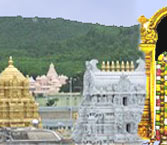
There are numerous places to see in Tirupati-Balaji and the Lord Venkateshwara temple is the best known among these. This temple is a Mecca for the Hindu pilgrims and devotees line up in long serpentine queues to offer prayers and offerings to the deity. The other leading places of tourist interest you will come across here are Sri Govindrajaswamy Temple, Sri Kapileswaraswami Temple, Sri Kodandaramaswami Temple and Sri Kalyana Venkateswaraswami Temple. Due to the presence of these hallowed shrines at this picture perfect town, tourism in Tirupati-Balaji is increasingly growing in popularity.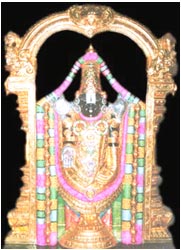
Apart from these attractions, further excitement awaits you when you embark on the weekend excursions. On a fine day, you can set out for a journey that will take you to the interesting sites such as Chandragiri, Sri Kalahasthi, Agastyaswamy Temple, Kalyani Dam, Horsley Hills and Kailasakona Waterfalls. The fun and excitement get enriched when your tour covers the festive seasons. The entire town pulsates with a festive spirit. Brahmotsavam is the most prominent among the festivals here. The temple car festival is also marked with great excitement and enthusiasm.

There are numerous places to see in Tirupati-Balaji and the Lord Venkateshwara temple is the best known among these. This temple is a Mecca for the Hindu pilgrims and devotees line up in long serpentine queues to offer prayers and offerings to the deity. The other leading places of tourist interest you will come across here are Sri Govindrajaswamy Temple, Sri Kapileswaraswami Temple, Sri Kodandaramaswami Temple and Sri Kalyana Venkateswaraswami Temple. Due to the presence of these hallowed shrines at this picture perfect town, tourism in Tirupati-Balaji is increasingly growing in popularity.

Apart from these attractions, further excitement awaits you when you embark on the weekend excursions. On a fine day, you can set out for a journey that will take you to the interesting sites such as Chandragiri, Sri Kalahasthi, Agastyaswamy Temple, Kalyani Dam, Horsley Hills and Kailasakona Waterfalls. The fun and excitement get enriched when your tour covers the festive seasons. The entire town pulsates with a festive spirit. Brahmotsavam is the most prominent among the festivals here. The temple car festival is also marked with great excitement and enthusiasm.
Another festival that is also characterized by the same degree of fervor and zeal is the Vijayanagar Festival which is held at the famous Chandragiri Fort. To be a part of these festivals is equally an exciting experience.
Tirupati-Balaji offers a number of excellent lodging facilities for the travelers. You can put up in any choice of accommodation you like and expect the finest hospitality and world class facilities and services. There are many luxury and budget category hotels that are located in and around Tirupati-Balaji.
Tirupati-Balaji is well-linked by air, rail and road. The nearest airport and railhead is Chennai and the town can be easily reached from Bangalore and Hyderabad by road.
Tirupati-Balaji offers a number of excellent lodging facilities for the travelers. You can put up in any choice of accommodation you like and expect the finest hospitality and world class facilities and services. There are many luxury and budget category hotels that are located in and around Tirupati-Balaji.
Tirupati-Balaji is well-linked by air, rail and road. The nearest airport and railhead is Chennai and the town can be easily reached from Bangalore and Hyderabad by road.
 Tirupati-Balaji is located in the Chittoor district of Andhra Pradesh and is a highly consecrated town known for the temple of Lord Venkateshwara. Located magnificently on a hill at Tirumala, which is a chain of seven hills and is known as Venkatachalam, with more than eight hundred in altitude, it is frequented by hordes of tourists all the year round. Almost everyday is a festivity here and a prior knowledge about Tirupati-Balaji will help you make your tour to this sacred town a rewarding experience.
Tirupati-Balaji is located in the Chittoor district of Andhra Pradesh and is a highly consecrated town known for the temple of Lord Venkateshwara. Located magnificently on a hill at Tirumala, which is a chain of seven hills and is known as Venkatachalam, with more than eight hundred in altitude, it is frequented by hordes of tourists all the year round. Almost everyday is a festivity here and a prior knowledge about Tirupati-Balaji will help you make your tour to this sacred town a rewarding experience.Several other places of tourist interest you will encounter on your tour to Tirupati-Balaji include Sri Govindrajaswamy Temple, Sri Kapileswaraswami Temple, Sri Kodandaramaswami Temple, Sri Kalyana Venkateswaraswami Temple and Tiruchanur.
Fast Facts
| Altitude | : | 161 meters above the sea level |
| Languages | : | Telugu and English |
| Religion | : | Hinduism |
| STD code | : | 0877 |
| Best Time to Visit | : | September to February |
History of Tirupati-Balaji:
Tirupati-Balaji has an ancient history. Tirupati (earlier Tiruvengadam) was the northernmost frontier of the Tamil kingdoms. The town of Tirupati-Balaji is said to be heaven on Earth (Kaliyuga Vaikuntha) and dates back during the times of Mauryas and the Guptas. By the 5th century AD, the town became an established center where the Vaishnava Saints (called Alvars) used to sing in praise of Lord Venkateshwara. The temple of Lord Venkateshwara has always been patronized by the various ancient dynasties such as Cholas, Hoysalas and Vijayanagar. The temple scaled the heights of popularity by the opulent donations by Krishna Deva Raya of Vijayanagar including gold and various precious ornaments and also by constructing the extended shrines. According to the people, the deity of Sriranganatha from Srirangam was brought to Tirupati for safekeeping from the incessant invasions. With the advent of the British East India Company in the year 1843, Seva Dossji of the Hathiramji Mutt at Tirumala was entrusted with the administration of Sri Venkateshwara Temple and its shrines. The present day town of Tirupati-Balaji is a burgeoning one with numerous tourists frequenting it from the far corners of the world.
Tirupati-Balaji has an ancient history. Tirupati (earlier Tiruvengadam) was the northernmost frontier of the Tamil kingdoms. The town of Tirupati-Balaji is said to be heaven on Earth (Kaliyuga Vaikuntha) and dates back during the times of Mauryas and the Guptas. By the 5th century AD, the town became an established center where the Vaishnava Saints (called Alvars) used to sing in praise of Lord Venkateshwara. The temple of Lord Venkateshwara has always been patronized by the various ancient dynasties such as Cholas, Hoysalas and Vijayanagar. The temple scaled the heights of popularity by the opulent donations by Krishna Deva Raya of Vijayanagar including gold and various precious ornaments and also by constructing the extended shrines. According to the people, the deity of Sriranganatha from Srirangam was brought to Tirupati for safekeeping from the incessant invasions. With the advent of the British East India Company in the year 1843, Seva Dossji of the Hathiramji Mutt at Tirumala was entrusted with the administration of Sri Venkateshwara Temple and its shrines. The present day town of Tirupati-Balaji is a burgeoning one with numerous tourists frequenting it from the far corners of the world.
The summers are generally hot in Tirupati-Balaji and the mercury can reach as high as 40 degrees Celsius and the winters are pleasant with a cool climate. This place should ideally be visited between September to February, and for the summer, light cottons would be the best, whereas for the winters, light woolens are recommended.

HIMKUND SAHI TOURIST PLACE
 Situated in the Himalayas at an elevation of over 15,000 ft in the state of Uttarakhand, Hemkund Sahib is a much traveled pilgrimage site for the Sikhs. It is located in the highest altitude of the Hemkund Lake (4329 m above sea level) and is surrounded by snow clad peaks and their glaciers.
Situated in the Himalayas at an elevation of over 15,000 ft in the state of Uttarakhand, Hemkund Sahib is a much traveled pilgrimage site for the Sikhs. It is located in the highest altitude of the Hemkund Lake (4329 m above sea level) and is surrounded by snow clad peaks and their glaciers.Visited both by Hindus and Sikhs and other communities as well, the very sacred Sikh shrine of Hemkund Sahib is the place where Guru Gobind Singh, the tenth and last Guru of the Sikhs, attained salvation after a prolonged process of meditation in his previous birth. The Guru’s memoirs which contain a comprehensive description of the site helped two devout Sikhs, Sant Sohan Singh and Havaldar Mohan Singh to revive it. According to Hindu mythology, Hemkund or Lokpal as it is also referred to as, is actually where Lakshman had performed meditation.
Reached by a 15 km trek from Govindghat (about 275 km from Rishikesh), which is the entranceway to the Bhyundar or Lakshman Ganga Valley, Hemkund Sahib offers a whole range of trekking options. Govindghat is located on the bus route to Badrinath. The trek from here to Hemkund interestingly takes one through deep forests of pine and rhododendron where one gets to woo the wild roses, ferns, and alpine flowers. The surging waters of the Lakshman Ganga are equally placating. The last 5 km of the trek involves a steep climb from Ghangharia, which is a base for visiting Hemkund. The placid waters of the Hemkund Lake which is 2km in circumference reflect images of Saptashringa Peaks (5,500 meters) which surround it. Sleets floating on the waters during the months between July and October offer the best scenarios in Hemkund – one of the finest tourist destinations in India.
Approximately 3 km from Gobinddham is located the 5 km long Valley of Flowers which makes for a wonderful visit while you are touring Hemkund Sahib. The beauty of fresh blooms will enchant you to the core and are some of the major tourist attractions in Hemkund Sahib.
Approximately 3 km from Gobinddham is located the 5 km long Valley of Flowers which makes for a wonderful visit while you are touring Hemkund Sahib. The beauty of fresh blooms will enchant you to the core and are some of the major tourist attractions in Hemkund Sahib.
How to reach Hemkund Sahib:
By Air: Nearest airport from Hemkund Sahib is Jolly Grant Airport, Dehradun, 307 kms.
By Air: Nearest airport from Hemkund Sahib is Jolly Grant Airport, Dehradun, 307 kms.
By Rail: Nearest railway station is Rishikesh, 293 kms.
By Road: Hemkund Sahib is located 5 Kms. from Ghangharia, which is reachable on foot from Govindghat which is well linked by excellent roadways and road transport with Rishikesh, Dehradun, Kotdwara, Nainital, Haridwar, Ranikhet and other major hill stations of Garhwal and Kumaon Hills.
A wonderful option for nature lovers and religious people alike, Hemkund Sahib draws a large number of tourists from various parts of the country.
By Road: Hemkund Sahib is located 5 Kms. from Ghangharia, which is reachable on foot from Govindghat which is well linked by excellent roadways and road transport with Rishikesh, Dehradun, Kotdwara, Nainital, Haridwar, Ranikhet and other major hill stations of Garhwal and Kumaon Hills.
A wonderful option for nature lovers and religious people alike, Hemkund Sahib draws a large number of tourists from various parts of the country.
The Hemkund Sahib is situated near the Valley of flowers, at an altitude of 4,329 m above sea level. The holy lake Hemkund is associated with the 10th Sikh guru, Guru Gobind Singh, the founder of the Khalsa (meaning 'the pure') Panth. It is believed that the guru had meditated on the banks of this holy lake in one of his earlier births. A Gurdwara is located on the banks of this lake. This is a very holy pilgrim spot of the Sikhs.
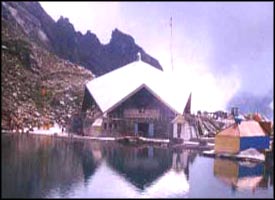
Hemkund is located in India's northern state of Uttaranchal in the Garhwal region. As the name suggests, Hemkund is a lake in the Himalayas. There are many lakes in the Himalayas, but few are set in as dramatic a setting as Hemkund is. At an altitude of 4,329 m above sea level, which is several hundred meters above the tree line, the lake is set like a jewel in a crown of seven of the most picturesque snow peaks of the Himalayas. In this surrealistic landscape,

Hemkund is located in India's northern state of Uttaranchal in the Garhwal region. As the name suggests, Hemkund is a lake in the Himalayas. There are many lakes in the Himalayas, but few are set in as dramatic a setting as Hemkund is. At an altitude of 4,329 m above sea level, which is several hundred meters above the tree line, the lake is set like a jewel in a crown of seven of the most picturesque snow peaks of the Himalayas. In this surrealistic landscape,
There would not be another living thing in sight. The only sound one can hear would probably be one's own sound. Visiting this place could be regarded as the encounter with the personification of absolute peace and raw natural beauty. It does not take much imagination to understand how the place came to be regarded as a spiritual power place.
Hemkund is mainly a pilgrimage site, and people come here to pay reverence at the Gurdwara and the Lakshman Temple. Besides, one can enjoy the serene and exotic beauty of the place. The Valley of Flowers is also located near Hemkund. Those interested in adventure sports can visit Auli during winters and enjoy skiing in the Himalayas.

Fast Facts
| Area | : | 2 sq km |
| Altitude | : | 4,329 metres above sea level |
| Languages | : | Hindi, Kumaoni, Garhwali, English |
History
It is this very place where Guru Gobind Singh, the tenth and last Guru of the Sikhs, became one with God after prolonged meditation in his previous birth. He mentioned it in his writings in glowing terms, but only vaguely alluded to its exact location. And so, it was not until 1930, when two devout Sikhs, Sant Sohan Singh and Havaldar Mohan Singh, chanced upon it during a cartography mission, that the place came to be venerated for having hosted the great spiritual leader. The place is now regarded as an important pilgrim place of the Sikhs. Hemkund is also a holy place for the Hindus. According to Hindu mythology, Hemkund (or Lokpal as it is also known) is where Lakshman had done his penance.
Best Season, Climate and Clothing
Being situated at such a high altitude, the climate of Hemkund is cold and inconsistent. The best time to visit this place is from July to September, as it is the only time of the year when the flowers are in bloom and the weather is not so cold. But before venturing on the journey, one should take care to carry woollens and raincoats. Good, strong trekking shoes are also a necessity.

BODHGAYA TOURIST PLACE
Located in the Indian state of Bihar, Bodhgaya is a magnificent tourist destination as well as an important pilgrim points for the Buddhists. It earns much of its claimto fame from the fact that Buddha attained enlightenment here. For the Buddhists, it is an important religious site and every year is visited by a large number of devotees. The main attraction of this town is Mahabodhi temple which is positioned near the spot where Lord Buddha attained spiritual enlightenment. Bodhgaya is not only an important Buddhist pilgrim center, but it is also an important center for the study of Buddhism. Hence, Bodhgaya is one of the most inescapable tourist destinations and occupies an important place for the Buddhists.The major tourist attractions of Bodhgaya are the various Buddhist monasteries and Mahabodhi Tree. The Mahabodhi complex is the place where Buddha meditated and attained Nirvana under the famous Bodhi Tree.
The solitude and peace seekers are surely going to find Bodhgaya a magnificent tourist destination that is away from the din and rush of the town and you will get the desired level of peace and joy during your Bodhgaya tour. Bodhgaya is also declared as a World Heritage Site by UNESCO and the number of tourists visiting this religious place is increasing day by day. Hence, there are also several accommodations in Bodhgaya that are known for their utmost hospitality and warmth in services. Bodhgaya can be reached by air, rail and road transport quite easily as there is an international airport in Bodhgaya that provides services to the various domestic and international flights. The road network in Bodhgaya is also equally good and the major cities in and around Bodhgaya are connected by the road transport system. The facility of railways is also available as the huge numbers of pilgrims and tourists drop in to this town for the tour.
The ideal time to visit Bodhgaya is during the winters because during this period of time, the climate is quite pleasant and you can enjoy your tour to the fullest extent. The local people of Bodhgaya are hospitable and also quite helpful. This pilgrimage center occupies an important place in the itinerary of a tourist who is on his tour of east India.

Bodhgaya is a small town in the state of Bihar and is one of the most venerated of the Buddhist sites in India. It is the place where Buddha attained spiritualenlightenment while he was meditating under the Bodhi tree. That particular tree later on came to be known as the Mahabodhi tree . Bodhgaya is also popular as a Buddhist learning center. Several important facts about Bodhgaya would further enrich the knowledge of the tourists before they embark on a tour to this splendid ancient city.
FACTS & FIGURES
| Population | : | 25,585 |
| Languages | : | Bhojpuri, Hindi and English |
| Best time to visit | : | Winters |
| STD Code | : | 0631 |
History
 The history of Bodhgaya can be traced back to the 7th century and it was the part of the first small kingdoms of India. This place came to prominence when a prince called Siddhartha gave up all the material pleasures and after strenuous efforts through meditation, attained enlightenment or Nirvana under a Bodhi tree. There is also a small shrine that was built under the rule of the great Mauryan ruler Ashoka in the 3rd century B.C. It is one of the most important places in Bodhgaya and should not be missed out during your trip to Bodhgaya.
The history of Bodhgaya can be traced back to the 7th century and it was the part of the first small kingdoms of India. This place came to prominence when a prince called Siddhartha gave up all the material pleasures and after strenuous efforts through meditation, attained enlightenment or Nirvana under a Bodhi tree. There is also a small shrine that was built under the rule of the great Mauryan ruler Ashoka in the 3rd century B.C. It is one of the most important places in Bodhgaya and should not be missed out during your trip to Bodhgaya.
Located in the center of the state of Bihar, it lies in the northeastern region of India. It forms the part of the great Ganges plains and is on the banks of river Fagu. It is located at a distance of 13 km to the south of Gaya and 113 km to the south of Patna city. Bodhgaya experiences a tropical climate and the summers are unbearably hot.
VISITING TIME
Bodhgaya can best be visited during the winters from the months of October to February. During the summer season, the mercury touches the mark 45-48°. You can wear light cotton during the summers and light woolens during the winter season.
Holidays in Bodhgaya are going to become one of the most memorable ones since you will get an opportunity to understand the values of the Buddhist religion and the various Buddhist sites that are located here.
Holidays in Bodhgaya are going to become one of the most memorable ones since you will get an opportunity to understand the values of the Buddhist religion and the various Buddhist sites that are located here.
Bodhgaya is a small town located in the state of Bihar in the northeastern region of India and is popular as a Buddhist pilgrim site. The place earns much of its claim to fame forbeing theplace where Buddha attained Nirvana or spiritual enlightenment. Find more information on this town through the map of Bodhgaya.

RISHIKESH TOURIST PLACE
Nestled picturesquely in the foothills of the mighty Himalayas, Rishikesh is an important pilgrim destination of north India and is also popular as the “world capital of yoga”. This spiritual town has gained immense significance and occupies a permanent position in the itinerary of a globe trotter who is on his north India tour. It is the point from where the journey to the char dhams (four sacred spots) commences. This place is also an irresistible lure for the adventure seekers as it offers a number of adventure options such as trekking expeditions to the snow capped Himalayan peaks and water rafting. travel to Rishikesh for an amazing experience involving religion, adventure, culture and ancient Yoga practices.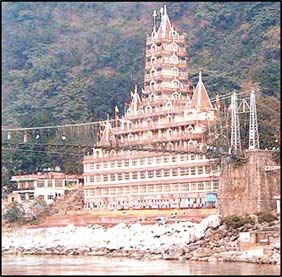 Rishikesh is also an important gateway to the Himalayan shrines of Badrinath, Kedarnath, Gangotri and Yamunotri. Besides, the various yoga centers located here have elevated this town to a leading position among the tourist destinations of north India. Apart from the breathtaking natural beauty, you can take delight in a number of other highlights that are located here such as Bharat Mandir, Rishikund, Triveni Ghat, Geeta Bhawan, Lakshman Jhula, Swarga Ashram and Trayambakeshwar Temple.
Rishikesh is also an important gateway to the Himalayan shrines of Badrinath, Kedarnath, Gangotri and Yamunotri. Besides, the various yoga centers located here have elevated this town to a leading position among the tourist destinations of north India. Apart from the breathtaking natural beauty, you can take delight in a number of other highlights that are located here such as Bharat Mandir, Rishikund, Triveni Ghat, Geeta Bhawan, Lakshman Jhula, Swarga Ashram and Trayambakeshwar Temple.
All these tourist attractions in Rishikesh are highly recommended during a tour to this holy place. The search for the spiritual ends at this place as it is dotted with numerous spiritual centers that give valuable tips for a healthy living and purification of mind and soul.
 Rishikesh is also an important gateway to the Himalayan shrines of Badrinath, Kedarnath, Gangotri and Yamunotri. Besides, the various yoga centers located here have elevated this town to a leading position among the tourist destinations of north India. Apart from the breathtaking natural beauty, you can take delight in a number of other highlights that are located here such as Bharat Mandir, Rishikund, Triveni Ghat, Geeta Bhawan, Lakshman Jhula, Swarga Ashram and Trayambakeshwar Temple.
Rishikesh is also an important gateway to the Himalayan shrines of Badrinath, Kedarnath, Gangotri and Yamunotri. Besides, the various yoga centers located here have elevated this town to a leading position among the tourist destinations of north India. Apart from the breathtaking natural beauty, you can take delight in a number of other highlights that are located here such as Bharat Mandir, Rishikund, Triveni Ghat, Geeta Bhawan, Lakshman Jhula, Swarga Ashram and Trayambakeshwar Temple. All these tourist attractions in Rishikesh are highly recommended during a tour to this holy place. The search for the spiritual ends at this place as it is dotted with numerous spiritual centers that give valuable tips for a healthy living and purification of mind and soul.
Finding a good accommodation in Rishikesh will not be of much hassle provided you get booked in advance. Rishikesh is strewn with a number of hotels and resorts that offer excellent guest facilities and amenities essential for a contented stay. One of the leading three star hotels is Ananda in the Himalayas offering you the comfort and luxury of the modern days. Another hotel that you can put up in is ‘The Glasshouse’ on the Ganges, which is highly acclaimed for its services and facilities. Several resorts are also located here.
Rishikesh, being a center of religious importance has excellent network of transportation and you can reach here from the distant towns of India. The nearest airport is Jolly Grant in Dehradun and the carriers for the other destinations of India operate from here including New Delhi. You have to come down to Haridwar in order to reach Rishikesh from where other rail connections are also available. Rishikesh is well-linked by road with the capital city Delhi and which is further connected by the national highways to other destinations of India.
Rishikesh, being a center of religious importance has excellent network of transportation and you can reach here from the distant towns of India. The nearest airport is Jolly Grant in Dehradun and the carriers for the other destinations of India operate from here including New Delhi. You have to come down to Haridwar in order to reach Rishikesh from where other rail connections are also available. Rishikesh is well-linked by road with the capital city Delhi and which is further connected by the national highways to other destinations of India.
Rishikesh is a scenic town located on the banks of river Ganga and is an important access point to the famous pilgrim spots of the Himalayas such as Badrinath, Kedarnath, Gangotri and Yamunotri. The various spiritual centers, yogic ashrams located here have earned this town the sobriquet “world capital of yoga”. The international tourists also drop in here in large numbers seeking spiritual enlightenment and also to enjoy the natural treasures of this place. The major highlights of this town are Lakshman Jhula, Bharat Mandir, Triveni Ghat, Rishikund, Geeta Bhawan, Swarga Ashram and Trayambakeshwar Temple. Prior knowledge about Rishikesh will be of immense help to the tourists for a satisfying tour to Rishikesh. Touristplacesinindia.com is the site providing helpful inputs about Rishikesh including fast facts, history and the ideal time to visit.
These helpful inputs about Rishikesh are certainly going to make your holidays a satisfying experience.
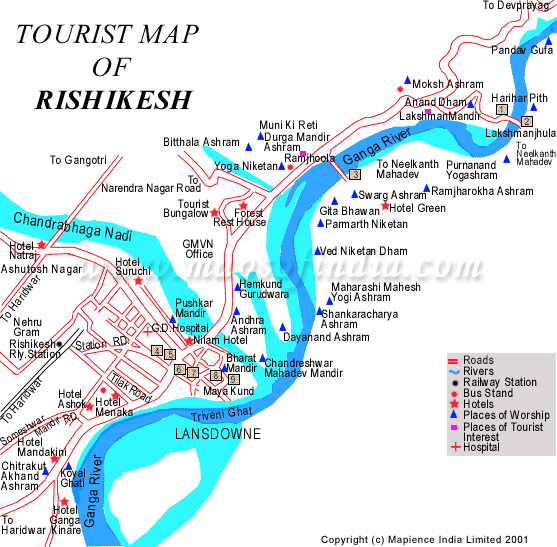
Fast Facts
| Altitude | 356 meters above sea level |
| Population | 59,671 |
| Languages Spoken | Garhwali, Hindi and English |
| STD Code | 01364 |
| Best Time to Visit | April to June or September to October. |
| State Capital | No |
History of Rishikesh
The history of Rishikesh goes back several centuries. There are several mythical stories associated with this place. It is this place where Raibhya Rishi, a noted saint, performed stern penance while sitting on the banks of the holy River Ganga. He got his reward when the lord appeared in front of him and gave the name of this place as Rishikesh. There is also a famous landmark called Bharat Temple and legend states that the brother of Rama, Bharat also did severe penance at this place. One of the most well-known religious leaders of contemporary times, Adi Shankaracharya, visited Rishikesh in the 9th century AD and this place thus got catapulted to the status of one of the major religious spots of north India. Rishikesh is also popular for Kailas Ashram Brahmavidyapeetham that happens to be a 120 years old institute offering courses for the traditional Vedantic Studies.
Best Season, Climate and Clothing
The climate of Rishikesh remains moderate throughout the year, being in the foothills. During the summer months, temperatures can go up to more than thirty degrees centigrade. The winter months are quite pleasant barring some occasions when the nights can get bitterly cold. For the summer, cotton clothing is recommended but do carry heavy woolens during the winter months.
These helpful inputs about Rishikesh are certainly going to make your holidays a satisfying experience.
Rishikesh is one of the most captivating tourist destinations in north India and is also globally famous as “world capital of yoga”. You can catch a glimpse of a number of pilgrimage sites here such as Bharat Mandir, Rishikund, Triveni Ghat, Geeta Bhawan, Lakshman Jhula, Swarga Ashram and Trayambakeshwar Temple. Touristplacesinindia.com offers this online Rishikesh map on which you can locate the important landmarks of the town such as railway station, bus stand and various places of tourist interest. The city Map of Rishikesh will be of immense help to those who want to get a virtual view of the place before they begin on the tour.

KANYAKUMARI TOURIST PLACE
Kanyakumari is said to be the southernmost point of the Indian peninsula and is an inescapable tourist destination of south India for the tourists. With its clear beaches and vast stretches of sands,it remains one of the most favored tourist spots for the visitors. It is also a popular temple town as it features some of the finest temples found in the state. A tour to this place would result in a whole lot of fun and pleasure for the tourists.
Kanyakumari is located in the southern state of Tamil Nadu and you cannot afford to miss out the sunrise and sunset while you are here for your vacations. The most fascinating feature of this town is its multi-hued beaches. On your travel to Kanyakumari, you will come across the Kumari Amman Temple which is devoted to the goddess Parvathi. The renowned Vivekananda Rock Memorial is built in several architectural styles off the coast on rocks that project from the Indian Ocean.
Kanyakumari was formerly known as Cape Comorin and is home to several historic sites that are many centuries old. The place is endowed by natural beauty which is unmatched by any other tourist destination of India. Tourism in Kanyakumari has led to an upsurge of the hotels that are located all around and form the ideal bases to explore the place. There are many categories of accommodations available in Kanyakumari and you can choose from any of the desired accommodation according to your taste and preference. The climatic conditions of Kanyakumari remain almost constant throughout the year and the winters are ideal for making a trip to Kanyakumari.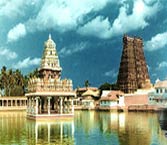
Kanyakumari is home to lots of other tourist attractions including the Gandhi Memorial, Government Museum and Sripada Parai where the virgin goddess is believed to have set her foot. Lots of important landmarks are located close to the town and a day trip to those places would definitely make for a wonderful travel experience. Kanyakumari is also popular for its mouthwatering regional cuisine that is available in a large number of hotels and restaurants. There are many food and beverage outlets that are located near the important tourist attractions and you should not miss out the lip-smacking seafood which is served there.
Kanyakumari is a town and a well known Hindu pilgrimage site in Tamil Nadu. It is also popularly known as Cape Camorin and located at the edge of Indian Peninsula. This place is at a distance of around 86 km from Thiruvananthapuram, the capital of Kerala. Kanyakumari is named after the Kanyakumari Temple dedicated to Kumari Amman. This temple is among the popular Kanyakumari tourist attractions. Being the point of intersection for the Bay of Bengal, Indian Ocean and the Arabian Sea, Kanyakumari is an important place on the tourist map of India. Over the years, this town has also emerged as a prominent center for art, culture and religion. Swami Vivekananda, the spiritual leader, had spent several days at this place. The temples here are famous for their architectural beauty. They were the works of the Chera, Pandya and the Chola rulers. Presently, this town receives around 2 million visitors every year.
The affable people and their culture cast a spell on the tourist and they long to visit this place again and again. Kanyakumari is well-connected by air, rail and road transport. The nearest airport is Chennai and Thruvananthapuram which is located in the neighboring state—Kerala. Vacations in Kanyakumari are incomplete without shopping; various articles that are sold here include Handcrafted trinkets, seashell art and palm leaf drawings.
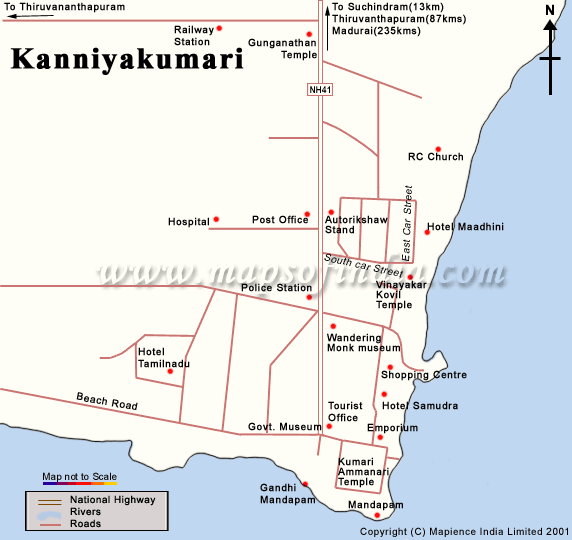
The most renowned landmark of this town is Meenakshi Sundareswarar Temple which has architecture par excellence. You will also find concentric rectangular streets surrounding the temple and symbolize the structure of the cosmos. Lots of devout pilgrims drop in to this place for worshipping the immensely revered idol.
On a city tour of Madurai, you will also come across the Thirumalai Nayak Palace that was built by a king in the year 1636 with the assistance of an Italian architect. The intricate art work and stunning interior decorations of this palace are worth taking a look on a travel to Madurai.
Some of the other major attractions in this spectacular town are Gandhi Museum, Thirupparamkundram, Azhagar Kovil and Vandiyur Mariamman Teppakulam. This city has also kept pace with the rest of the world and for the recreation purpose you can find several clubs, cinema halls, cultural centers and skating complex. Tourism is fast growing here and you will definitely enjoy the vacations in Madurai to the fullest extent, thanks to the tourist friendly atmosphere provided by the authorities. The shopping enthusiasts are also going to find this town an amazing one since it has a large number of shops offering quality handlooms, fabrics and saris.
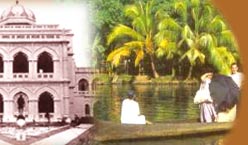
There is no dearth of the lodging options that are available in Madurai and you can find varied classes of hotels here. Some of the famous hotels in this town that are ideal for the accommodation purpose include the Taj Garden Retreat, Madurai Ashok and Madurai Park Inn. These hotels offer great value for money and promise a gratifying stay. Madurai is easily accessible by the air, rail and road network. There is an airport in Madurai that connects the city Chennai and Mumbai by regular flights. Cities like Coimbatore, Chennai, Rameswaram and Kanyakumari are well-connected by the rail network. The road transport is equally good and the nearby destinations of Tamil Nadu and other south Indian states can be conveniently accessed by well maintained roads.
Madurai is an exquisite city which is most popular for its marvelous temples that are magnificent examples of rich architecture and breathtaking sculptural works. Madurai is located in Tamil Nadu and attracts numerous tourists all the year round by its inescapable charm. There are many tourist attractions in Madurai that are reminiscent of the rich culture and heritage of this town during the ancient and medieval ages. Some of the important Madurai tourist attractions and their descriptions are given in brief below.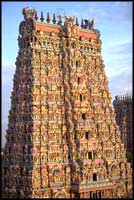 Sree Meenakshi Temple:
Sree Meenakshi Temple:
It is one of the most prominent among the temples of Madurai. It is dedicated to Lord Shiva who was known here as Sundareshvara and his wife Parvati or Meenakshi. This temple was built by Kulasekara Pandya and the most impressive feature of this temple is the 12 gopurams. It also has soaring towers that stand on the granite bases and have stucco figures of deities, mythical animals and monsters tinted in vibrant colors.
Thirumalai Nayak Palace:
It is a magnificent palace that was built by King Thirumalai Nayak with valuable assistance of an Italian architect in the year 1636. The palace had two parts known as Swargavilasa and Rangavilasa. You will come across theatre, shrine, apartments, armory, palanquin place, royal bandstand, quarters, pond and garden while taking a stroll inside this imposing palace.
Gandhi Museum:
This is the most distinguished among the tourist attractions in Madurai and is a living memorial of Mahatma Gandhi. This museum houses photos, paintings, sculptures, manuscripts, quotations, and some articles that were used by him.
Mariamman Teppakulam:
It is also among one of the many things to watch in Madurai and is located at a distance of 5 km to the east of Meenakshi temple. There is a tank having an idol of Vinayaka which is located on a platform in the centre. It is also a venue of the temple's annual Teppakulam float festival which is celebrated with huge zeal and excitement.
Thirupparankunram:
Tirupparankundram is famous for the Pandyan rock-cut shrines that date back to the 8th century that later came to be known as the Nayaka Hindu temple. You will find a wide range of Hindu deities carved on the walls on your visit to this temple. Located on the top a hill, people believe that it is one of six abodes of Lord Subramanya.
Madurai is an important temple town of Tamil Nadu and is famous for some of the finest temples belonging to the medieval age. This town is a colorful combination of historic charm and natural beauty. With the map of Madurai you can find the important places of tourist interest and the important landmarks of the town easily. This tourist map of Madurai gives you an idea about the location of various historical places, religious places and district headquarters
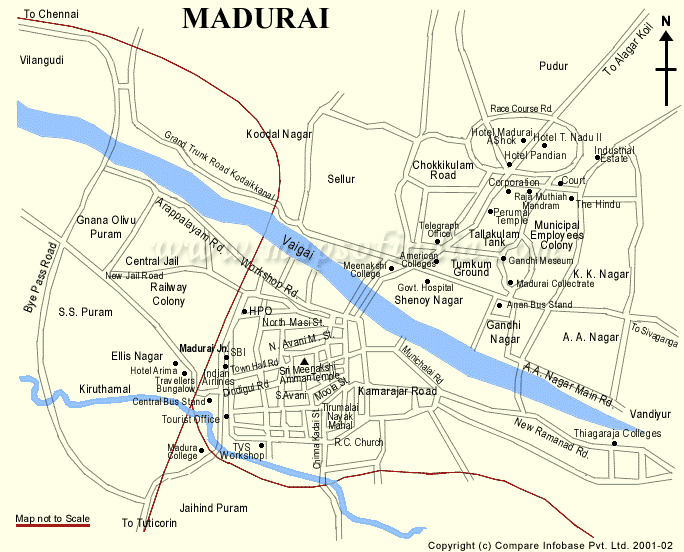
Mathura City in Uttar Pradesh is a place greatly revered by the Hindu pilgrims and it is an indispensable stopover on the itinerary of a tourist who is on his Uttar Pradesh tour. Mathura is most reputed as the birthplace of Lord Krishna and is also called as the Krishnajanmabhoomi. Mathura is a wonderful place for exploring the mythological associations the city has, especially with the events related in the Mahabharata. One of the most important tourist attractions in Mathura is the Krishna Janambhoomi temple. Located in the heart of the city, it is believed to have been built on the place where Lord Krishna was born. There is a stone slab marking the exact site of his birth which fascinates the believers.
The Dwarkadhish temple is another attraction in this temple town that should not be missed out by the tourists. The temple is located on the way to Yamuna and is highly venerated by the Hindu pilgrims. Mathura city in Uttar Pradesh is also famous for the production of the images of Buddha and they would also make for some of the best buys for the souvenir hunters.
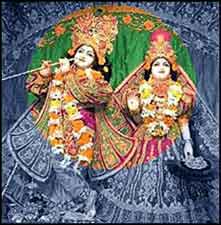
A trip to Mathura would also take you to the Ranghbhumi which is the site where Kansa, Krishna’s uncle was slain by him. Nearby there is also Vishram Ghat where Lord Krishna rested for sometime after killing Kansa. The place is reminiscent of the mythological charm that seems to linger here.
The Government Museum is also among the important tourist attractions and is a must visit for the tourists. The museum is a repository of the largest collection of Kushana sculptures in the nation. Some of the things housed in the museum are stone sculptures terracotta items, gold, silver and copper coins, clay seals, ancient pottery, paintings and bronze exhibits.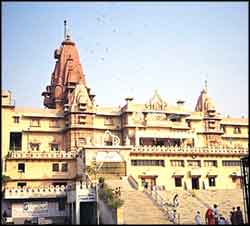 Mathura is a growing tourist hub and hence it offers to its tourists fine lodging options. The city has three star hotels such as Best Western Radha Ashok and Hotel Sheetal Regency. You will also find Economy Hotels such as Hotel Mukund Palace and Hotel Surya International. There are also budget hotels such as Dwaper Resorts and Hotel Kaveri. Mathura has a good transportation network and it can be reached from all corners of India. The nearest airport is Kheria in Agra which connects the cities like Mumbai, Kolkata, Chennai, Bangalore and Ahmedabad.
Mathura is a growing tourist hub and hence it offers to its tourists fine lodging options. The city has three star hotels such as Best Western Radha Ashok and Hotel Sheetal Regency. You will also find Economy Hotels such as Hotel Mukund Palace and Hotel Surya International. There are also budget hotels such as Dwaper Resorts and Hotel Kaveri. Mathura has a good transportation network and it can be reached from all corners of India. The nearest airport is Kheria in Agra which connects the cities like Mumbai, Kolkata, Chennai, Bangalore and Ahmedabad.
The rail transport is equally good and the cities of Delhi, Agra, Mumbai, Jaipur, Gwalior, Kolkata, Hyderabad, Chennai and Lucknow are connected by the super-fast and express train network.
The Dwarkadhish Temple was built in the year 1814 and is located near River Yamina. It is the most well-liked temple of the city and looks even more attractive when it is gracefully decorated on religious and celebratory occasions such as Holi, Janmashtami and Diwali. The temple features fabulous architectural splendour and is intricately carved and painted. This temple for a long time has been managed by the followers of Vallabhacharya.
There are so many things to watch in Mathura that you should have ample time in hand before you embark on a tour to this historic land of culture and religion.
Find more about the Mystic Mathura on the site touristplacesinindia.com that also offers useful piece of information on tourist attractions in Mathura.
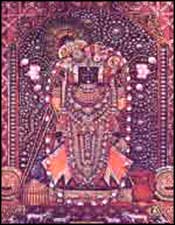
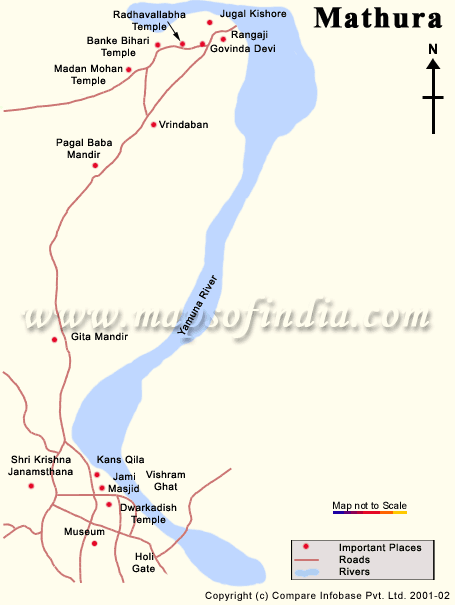
Kanyakumari is located in the southern state of Tamil Nadu and you cannot afford to miss out the sunrise and sunset while you are here for your vacations. The most fascinating feature of this town is its multi-hued beaches. On your travel to Kanyakumari, you will come across the Kumari Amman Temple which is devoted to the goddess Parvathi. The renowned Vivekananda Rock Memorial is built in several architectural styles off the coast on rocks that project from the Indian Ocean.
Kanyakumari was formerly known as Cape Comorin and is home to several historic sites that are many centuries old. The place is endowed by natural beauty which is unmatched by any other tourist destination of India. Tourism in Kanyakumari has led to an upsurge of the hotels that are located all around and form the ideal bases to explore the place. There are many categories of accommodations available in Kanyakumari and you can choose from any of the desired accommodation according to your taste and preference. The climatic conditions of Kanyakumari remain almost constant throughout the year and the winters are ideal for making a trip to Kanyakumari.

Kanyakumari is home to lots of other tourist attractions including the Gandhi Memorial, Government Museum and Sripada Parai where the virgin goddess is believed to have set her foot. Lots of important landmarks are located close to the town and a day trip to those places would definitely make for a wonderful travel experience. Kanyakumari is also popular for its mouthwatering regional cuisine that is available in a large number of hotels and restaurants. There are many food and beverage outlets that are located near the important tourist attractions and you should not miss out the lip-smacking seafood which is served there.
Kanyakumari is a town and a well known Hindu pilgrimage site in Tamil Nadu. It is also popularly known as Cape Camorin and located at the edge of Indian Peninsula. This place is at a distance of around 86 km from Thiruvananthapuram, the capital of Kerala. Kanyakumari is named after the Kanyakumari Temple dedicated to Kumari Amman. This temple is among the popular Kanyakumari tourist attractions. Being the point of intersection for the Bay of Bengal, Indian Ocean and the Arabian Sea, Kanyakumari is an important place on the tourist map of India. Over the years, this town has also emerged as a prominent center for art, culture and religion. Swami Vivekananda, the spiritual leader, had spent several days at this place. The temples here are famous for their architectural beauty. They were the works of the Chera, Pandya and the Chola rulers. Presently, this town receives around 2 million visitors every year.
Top attractions in Kanyakumari
Tourism in Kanyakumari flourished during the 1970s. The main temple of Kanyakumari is also an important tourist site. Check out the main places of visit in Kanyakumari:
Kanyakumari Temple - A Shakti Peetha (place of worship where the pieces of Goddess Durga’s body fell during the Tandav), this temple is dedicated to Parvati, a virgin incarnation of Goddess Durga who wanted to marry Lord Shiva. Devi Kanya Kumari or Kumari Amman is the principal temple deity. According to legends, Shiva did not turn up on the wedding day as promised and the feast remained incomplete with grains turning to stones. The temple has the black stone image of the virgin deity with a diamond nose ring glittering in the dark chambers.
Our Lady of Ransom Church – An important attraction in the Kanyakumari town, this church is first of its kind here. In the 15th century it had a thatched roof, now it reflects Gothic style of architecture with the sea forming an excellent backdrop. On the central tower of this church is the gold cross.
Tourism in Kanyakumari flourished during the 1970s. The main temple of Kanyakumari is also an important tourist site. Check out the main places of visit in Kanyakumari:
Kanyakumari Temple - A Shakti Peetha (place of worship where the pieces of Goddess Durga’s body fell during the Tandav), this temple is dedicated to Parvati, a virgin incarnation of Goddess Durga who wanted to marry Lord Shiva. Devi Kanya Kumari or Kumari Amman is the principal temple deity. According to legends, Shiva did not turn up on the wedding day as promised and the feast remained incomplete with grains turning to stones. The temple has the black stone image of the virgin deity with a diamond nose ring glittering in the dark chambers.
Our Lady of Ransom Church – An important attraction in the Kanyakumari town, this church is first of its kind here. In the 15th century it had a thatched roof, now it reflects Gothic style of architecture with the sea forming an excellent backdrop. On the central tower of this church is the gold cross.
Vivekananda Rock Memorial – A ferry service from the shore will take you the place where Swami Vivekananda sat on a long meditation. Built on the rock in 1970, amidst the sea, is the memorial that comprises a meditation hall. The Shripada Mandapam has a museum and a study hall as well. Few feet away from this rock, is the statue of Tamil poet Thiruvallur.
Mahatma Gandhi Memorial – This memorial in Kanyakumari is of immense cultural significance. Father of the Nation, Mahatma Gandhi visited this town in 1925. This memorial was constructed in 1952 on the eve of Gandhiji’s birthday on October 2. Also known as the Gandhi Mandapam, there is a library here with a collection of history and philosophy texts. The central dome is 76 feet in height.
Mahatma Gandhi Memorial – This memorial in Kanyakumari is of immense cultural significance. Father of the Nation, Mahatma Gandhi visited this town in 1925. This memorial was constructed in 1952 on the eve of Gandhiji’s birthday on October 2. Also known as the Gandhi Mandapam, there is a library here with a collection of history and philosophy texts. The central dome is 76 feet in height.
Government Museum of Kanyakumari – Located on the Gandhi Memorial Road, this museum was set up in 1991. It houses several paintings, sculptures and portals dating to the ancient period. Few notable items in this museum are the sculptures of Lord Vishnu and the statue of Nataraja. There is also a huge collection of gold and silver coins here. The Tranvancore gallery here is a storehouse of information and documents regarding the Travancore government.
Padmanabhapuram Palace – This palace is situated close to Thuckalay, a town in Kanyakumari. Built of granite, this palace is spread across 4 km. Situated at the foothills of the Veli Hills, it offers stunning views. Maintained by the Archeological Department of Kerala, it was the erstwhile residence of the Travancore ruler before the capital was shifted to Thiruvananthapuram. The exteriors reflect the Kerala style of architecture. The most interesting part of its interiors is the King’s Council hall that is dark, colored with mica and beautifully decorated.
Vattakottai Fort – It is among the prominent monuments here and a standing example of exemplary art. Constructed on the seaboard by Captain Lannoy, this fort acted as a shelter against the Dutch. Covering 6 acres, the Vattakottai Fort is made of stone. It also has high walls. It is being promoted as a picnic place with the surrounding region offering panoramic views.
Padmanabhapuram Palace – This palace is situated close to Thuckalay, a town in Kanyakumari. Built of granite, this palace is spread across 4 km. Situated at the foothills of the Veli Hills, it offers stunning views. Maintained by the Archeological Department of Kerala, it was the erstwhile residence of the Travancore ruler before the capital was shifted to Thiruvananthapuram. The exteriors reflect the Kerala style of architecture. The most interesting part of its interiors is the King’s Council hall that is dark, colored with mica and beautifully decorated.
Vattakottai Fort – It is among the prominent monuments here and a standing example of exemplary art. Constructed on the seaboard by Captain Lannoy, this fort acted as a shelter against the Dutch. Covering 6 acres, the Vattakottai Fort is made of stone. It also has high walls. It is being promoted as a picnic place with the surrounding region offering panoramic views.
The affable people and their culture cast a spell on the tourist and they long to visit this place again and again. Kanyakumari is well-connected by air, rail and road transport. The nearest airport is Chennai and Thruvananthapuram which is located in the neighboring state—Kerala. Vacations in Kanyakumari are incomplete without shopping; various articles that are sold here include Handcrafted trinkets, seashell art and palm leaf drawings.
There are no words that can completely describe the beauty of Kanyakumari and it remains one of the most popular tourist destinations of south India. Located in the southernmost point of the Indian mainland, it is a magnificent place of natural beauty where you can see the deep blue waters of the ocean meeting the horizon. This southernmost town of Tamil Nadu is an important attraction for the tourists. Before you set out on a tour, you should have enough information about Kanyakumari that would help you explore the town conveniently.
Fast Facts
| Population | : | 19,678 |
| Altitude | : | 0.300 meters above the sea level |
| Languages | : | Tamil, Malayalam and English |
| Best time to visit | : | October to March |
| STD Code | : | 04652 |
History
Kanyakumari was once also called as Alexandria of the East and was one of the great centers for learning, art, and culture. It was also an important place for trade and commerce that flourished during the ancient time. Formerly Kanyakumari was ruled by the Cholas, the Cheras, the Pandyas and the Nayaks and you can clearly see those influences in the architectural splendor of the temples here. About Kanyakumari one thing is quite apparent that it was the most favored seat of the rulers owing to its unmatched natural beauty and rich culture and heritage.
Kanyakumari was for some period, under the rule of the kings of Travancore. You can also see the Christian influence in the town as Christianity was advocated by St. Thomas in 52 A.D. Similarly, Jainism and Islam have also left their imprints on this place and have considerably contributed to the architectural wealth and literary heritage of the region. There are many places to visit in Kanyakumari which bear testimony to the ancient culture and civilization of this place.
Best Season, Climate, and Clothing
Kanyakumari is adjacent to the sea and hence enjoys a maritime climate all the year round. However, the summers are sweltering and the temperature may soar to as high as 34.8°C. The ideal time to visit Kanyalumari would be from October to March and the cottons would be ideal as far as clothing is concerned. So make a trip to Kanyakumari and come back with some of the memorable moments spent there.
Kanyakumari is the southernmost point of the Indian mainland and is well-known for some of the finest natural and man-made tourist attractions that are located here. It is at this place where you can see the waters of Arabian Sea and Bay of Bengal merge into the Indian Ocean. Locate and find the important landmarks of Kanyakumari on the Kanyakumari Map. Railway Station of Kanyakumari and other important tourist destinations can also be located with ease.

MADURAI TOURIST PLACE
Madurai, in Tamil Nadu is one of the most ancient cities of India that dates back to the Sangam period long before the Christian era. Madurai boasts of a rich past during which it was the center of Tamil literature and many masterpieces were produced during those days. Madurai is also home to a large number of temples that reflect the refined architectural works of yore. There are numerous tourist attractions in Madurai that will fill your trip to Madurai with joy and excitement.The most renowned landmark of this town is Meenakshi Sundareswarar Temple which has architecture par excellence. You will also find concentric rectangular streets surrounding the temple and symbolize the structure of the cosmos. Lots of devout pilgrims drop in to this place for worshipping the immensely revered idol.
On a city tour of Madurai, you will also come across the Thirumalai Nayak Palace that was built by a king in the year 1636 with the assistance of an Italian architect. The intricate art work and stunning interior decorations of this palace are worth taking a look on a travel to Madurai.
Some of the other major attractions in this spectacular town are Gandhi Museum, Thirupparamkundram, Azhagar Kovil and Vandiyur Mariamman Teppakulam. This city has also kept pace with the rest of the world and for the recreation purpose you can find several clubs, cinema halls, cultural centers and skating complex. Tourism is fast growing here and you will definitely enjoy the vacations in Madurai to the fullest extent, thanks to the tourist friendly atmosphere provided by the authorities. The shopping enthusiasts are also going to find this town an amazing one since it has a large number of shops offering quality handlooms, fabrics and saris.

There is no dearth of the lodging options that are available in Madurai and you can find varied classes of hotels here. Some of the famous hotels in this town that are ideal for the accommodation purpose include the Taj Garden Retreat, Madurai Ashok and Madurai Park Inn. These hotels offer great value for money and promise a gratifying stay. Madurai is easily accessible by the air, rail and road network. There is an airport in Madurai that connects the city Chennai and Mumbai by regular flights. Cities like Coimbatore, Chennai, Rameswaram and Kanyakumari are well-connected by the rail network. The road transport is equally good and the nearby destinations of Tamil Nadu and other south Indian states can be conveniently accessed by well maintained roads.
Madurai is an exquisite city which is most popular for its marvelous temples that are magnificent examples of rich architecture and breathtaking sculptural works. Madurai is located in Tamil Nadu and attracts numerous tourists all the year round by its inescapable charm. There are many tourist attractions in Madurai that are reminiscent of the rich culture and heritage of this town during the ancient and medieval ages. Some of the important Madurai tourist attractions and their descriptions are given in brief below.
 Sree Meenakshi Temple:
Sree Meenakshi Temple:It is one of the most prominent among the temples of Madurai. It is dedicated to Lord Shiva who was known here as Sundareshvara and his wife Parvati or Meenakshi. This temple was built by Kulasekara Pandya and the most impressive feature of this temple is the 12 gopurams. It also has soaring towers that stand on the granite bases and have stucco figures of deities, mythical animals and monsters tinted in vibrant colors.
Thirumalai Nayak Palace:
It is a magnificent palace that was built by King Thirumalai Nayak with valuable assistance of an Italian architect in the year 1636. The palace had two parts known as Swargavilasa and Rangavilasa. You will come across theatre, shrine, apartments, armory, palanquin place, royal bandstand, quarters, pond and garden while taking a stroll inside this imposing palace.
Gandhi Museum:
This is the most distinguished among the tourist attractions in Madurai and is a living memorial of Mahatma Gandhi. This museum houses photos, paintings, sculptures, manuscripts, quotations, and some articles that were used by him.
Mariamman Teppakulam:
It is also among one of the many things to watch in Madurai and is located at a distance of 5 km to the east of Meenakshi temple. There is a tank having an idol of Vinayaka which is located on a platform in the centre. It is also a venue of the temple's annual Teppakulam float festival which is celebrated with huge zeal and excitement.
Thirupparankunram:
Tirupparankundram is famous for the Pandyan rock-cut shrines that date back to the 8th century that later came to be known as the Nayaka Hindu temple. You will find a wide range of Hindu deities carved on the walls on your visit to this temple. Located on the top a hill, people believe that it is one of six abodes of Lord Subramanya.

MATHURA TOURIST PLACE
Mathura City in Uttar Pradesh is a place greatly revered by the Hindu pilgrims and it is an indispensable stopover on the itinerary of a tourist who is on his Uttar Pradesh tour. Mathura is most reputed as the birthplace of Lord Krishna and is also called as the Krishnajanmabhoomi. Mathura is a wonderful place for exploring the mythological associations the city has, especially with the events related in the Mahabharata. One of the most important tourist attractions in Mathura is the Krishna Janambhoomi temple. Located in the heart of the city, it is believed to have been built on the place where Lord Krishna was born. There is a stone slab marking the exact site of his birth which fascinates the believers.
The Dwarkadhish temple is another attraction in this temple town that should not be missed out by the tourists. The temple is located on the way to Yamuna and is highly venerated by the Hindu pilgrims. Mathura city in Uttar Pradesh is also famous for the production of the images of Buddha and they would also make for some of the best buys for the souvenir hunters.

A trip to Mathura would also take you to the Ranghbhumi which is the site where Kansa, Krishna’s uncle was slain by him. Nearby there is also Vishram Ghat where Lord Krishna rested for sometime after killing Kansa. The place is reminiscent of the mythological charm that seems to linger here.
The Government Museum is also among the important tourist attractions and is a must visit for the tourists. The museum is a repository of the largest collection of Kushana sculptures in the nation. Some of the things housed in the museum are stone sculptures terracotta items, gold, silver and copper coins, clay seals, ancient pottery, paintings and bronze exhibits.
 Mathura is a growing tourist hub and hence it offers to its tourists fine lodging options. The city has three star hotels such as Best Western Radha Ashok and Hotel Sheetal Regency. You will also find Economy Hotels such as Hotel Mukund Palace and Hotel Surya International. There are also budget hotels such as Dwaper Resorts and Hotel Kaveri. Mathura has a good transportation network and it can be reached from all corners of India. The nearest airport is Kheria in Agra which connects the cities like Mumbai, Kolkata, Chennai, Bangalore and Ahmedabad.
Mathura is a growing tourist hub and hence it offers to its tourists fine lodging options. The city has three star hotels such as Best Western Radha Ashok and Hotel Sheetal Regency. You will also find Economy Hotels such as Hotel Mukund Palace and Hotel Surya International. There are also budget hotels such as Dwaper Resorts and Hotel Kaveri. Mathura has a good transportation network and it can be reached from all corners of India. The nearest airport is Kheria in Agra which connects the cities like Mumbai, Kolkata, Chennai, Bangalore and Ahmedabad. The rail transport is equally good and the cities of Delhi, Agra, Mumbai, Jaipur, Gwalior, Kolkata, Hyderabad, Chennai and Lucknow are connected by the super-fast and express train network.
Mathura is one of the holiest towns of Uttar Pradesh and ranks high among the pilgrim destinations of north India. It is located on the western banks of River Yamuna and was formerly a hub of rich culture and civilization. The Krishna Janmabhoomi temple is the most important attraction of the town and has its own charm and grandeur that gets manifested through its magnificent architecture. The pleasure of exploring this ancient town cannot be put in words and it would seem as if the history of this place has come alive. You should have a fair idea about Mathura including vital tourist information about the city before embarking on a journey to this sacred place. The ancient land of Mathura has been known for its mythical associations and is highly revered among the various other religious places of India. Mathura was once upon a time a hub of rich culture and heritage and it is thronged by numerous tourists every year. It is the birth place of Lord Krishna and you will come across some of the most beautiful temples and shrines that have been built here. A stroll through its streets will give you a feel of the traditions that have survived in this place over several centuries. Mystic Mathura has lots of things to offer to its tourists on their tour of Mathura and some of the prominent ones to mention would be:
Shri Krishna Janma Bhoomi:
This is believed to be the birthplace Lord Krishna, the most reverd Indian deity and one of the important characters of the Indian epic, the Mahabharata. The site is now home to a magnificent temple dedicated to Lord Krishna. There is also a museum inside the temple that displays several antique statues that were excavated in the neighboring areas.
Janma Masjid:
You will also come across this beautiful mosque built by Nabir Khan in the year1661 on your Mystic Mathura tour. The mosque looks quite imposing with its four minarets and the imprints of the bright colored plaster mosaic that had once beautified its panels.
Vishram Ghat:
This is a holy spot and is located on the bank of River Yamuna and also has an interesting legend associated with it. Lord Krishna is said to have rested at this spot after the vicious duel with his uncle Kansa, who happened to be a cruel king and had not only misused his power and tortured his citizens but had also captivated his own father and seized his rights as a king.
ARKI-TRAVEL.BLOGSPOT.IN provides helpful online information about Mathura that would be of immense help to those who are planning for a trip to Mathura. You can learn about the history, best time to travel and important facts and figures of this town.
Shri Krishna Janma Bhoomi:
This is believed to be the birthplace Lord Krishna, the most reverd Indian deity and one of the important characters of the Indian epic, the Mahabharata. The site is now home to a magnificent temple dedicated to Lord Krishna. There is also a museum inside the temple that displays several antique statues that were excavated in the neighboring areas.
Janma Masjid:
You will also come across this beautiful mosque built by Nabir Khan in the year1661 on your Mystic Mathura tour. The mosque looks quite imposing with its four minarets and the imprints of the bright colored plaster mosaic that had once beautified its panels.
Vishram Ghat:
This is a holy spot and is located on the bank of River Yamuna and also has an interesting legend associated with it. Lord Krishna is said to have rested at this spot after the vicious duel with his uncle Kansa, who happened to be a cruel king and had not only misused his power and tortured his citizens but had also captivated his own father and seized his rights as a king.
ARKI-TRAVEL.BLOGSPOT.IN provides helpful online information about Mathura that would be of immense help to those who are planning for a trip to Mathura. You can learn about the history, best time to travel and important facts and figures of this town.
Dwarkadheesh Temple:
There are so many things to watch in Mathura that you should have ample time in hand before you embark on a tour to this historic land of culture and religion.
Find more about the Mystic Mathura on the site touristplacesinindia.com that also offers useful piece of information on tourist attractions in Mathura.
Mathura is a sacred town located in the state of Uttar Pradesh and is a must visit for the pilgrim tourists who want to relive the ancient charm of this birthplace of Lord Krishna. This town abounds with lots of temples and ghats that are frequented by the tourists all the year round. This online map of Mathura is very helpful as it offers you the location of Mathura. On your tour to this magical town benefit from this tourist map of Mathura that helps you locate the important landmarks, rivers and roads conveniently.
FACTS AND FIGURES

| Area | 9.37 sq km |
| Altitude | 287 m above sea level |
| Population | 2,98,827 |
| Languages Spoken | Hindi and Brajbhasha |
| Religion | Hindu (91.59 %), Muslim (8.12 %), Others (0.29%) |
| STD Code | 0565 |
History
Mathura is one of the most ancient towns of India and finds mention in the Ramayana, the oldest epic. This place was thickly forested and was known as Madhuvan then Madhupara and later on Mathura. Mathura became the capital of the Shursen republic in the 6th century BC and soon after was ruled by the Maurya Empire and the Sunga dynasty. Archaeological proof seems to point that, by 100 BC, Jains used to live in Mathura. The art form of Mathura and its culture reached its summit under the Kushan dynasty who had declared it as their capital.
Mahmud of Ghazni in 1018 ransacked many of its temples and later on was the place destroyed by Sikandar Lodhi who got the epithet of ‘But Shikan’- The destroyer of idols.
Mahmud of Ghazni in 1018 ransacked many of its temples and later on was the place destroyed by Sikandar Lodhi who got the epithet of ‘But Shikan’- The destroyer of idols.
Mathura was afterward won over from the Mughals by the Jat kings of Bharatpur but consequently annexed by the Marathas. Built in the year 1815 by Seth Gokuldas Parikh (treasurer of Gwalior), the Dwarkadeesh temple is the main Krishna shrine at present in Mathura and is one of the most famous tourist attractions of Mathura.
Best Season, Climate, and Clothing
Mathura experiences an extreme and tropical type of climate. The summers are generally hot and winters are chilly and foggy. From July to September it experiences southwestern monsoon rains. The ideal time to visit Mathura is during the winter season, between the months of October and March. For the summer season cotton clothing is ideal while heavy woolens are recommended for the winters.
